The Canadian Jewish News

Summer 2023 | Kayitz 5783
November


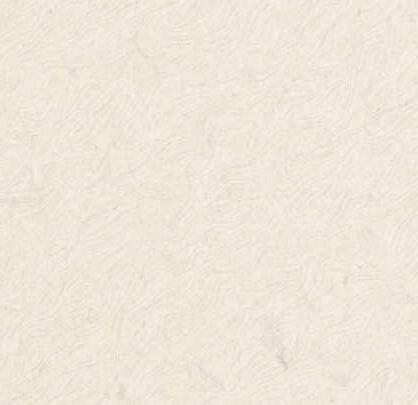





Park Hyatt Hotel – Toronto






Honourary Patrons the Koschitzky Family Event Co-Chairs



Warren and Debbie Kimel / Lewis Mitz and Wendy Posluns
Dinner Chairs Elliott and Wendy Eisen
SAVE The DATE
30, 2023 The Jerusalem Foundation of Canada / nomiy@jerusalemfoundation.ca / Tel: 416-922-0000 www.jerusalemfoundation.org Join the Jerusalem Foundation of Canada In continued support of the Community and Culture Fund Dedication of the Canada Pathway and Inauguration of the Youth Leadership Prize
the memory of Julia Koschitzky z”l
Honouring





THECJN.CA 3
would life look like
you couldn’t go to school? a digital exhibit AVAILABLE NOW memoirs.azrielifoundation.org
What
if






4 THE FRONT PAGES 10 Considering the ‘Moshiach Energy’ of comedian Modi AVI FINEGOLD 14 The CJN Daily’s top stories from Spring 2023 ELLIN BESSNER 15 Wayne & Shuster get a live revival of radio shows 21 The arts across Canada explored on Culturally Jewish DAVID SKLAR AND ILANA ZACKON FEATURES 26 COVER STORY: Seymour Epstein on his Israel experience 32 What recent novels teach us about modern Israeli life HANNAH SROUR-ZACKON 34 Vivian Bercovici’s view from the streets of Israel at 75 43 The CJN reader stories about memories of the Jewish state 15 10 43 Ariel Schalit/AP/Canadian Press; Courtesy of The Wayne Family/Bygone Theatre; Daniel Seung Lee; Michael Brooke
inside 34
What’s
THE BACK PAGES
54 The musical road from Morocco to Montreal in the 1950s
CHRISTOPHER SILVER
60 William Kurelek’s classic paintings of Jewish Life in Canada
SARAH MILROY
66 Srulik from the Treasure Trove collection of David Matlow

Contributors
Christopher Silver is the Segal Family Assistant Professor in Jewish History and Culture in the Department of Jewish Studies at McGill University. He’s also the founder and curator of Gharamophone. com, a digital archive of North African recordings from the first half of the 20th century.

Vivian Bercovici is a Toronto lawyer turned Tel Avivian, and Canada’s ambassador to Israel from January 2014 to July 2016. She’s the founder and editor-inchief of State of Tel Aviv, a digital newsletter and weekly podcast, and a regular contributor to the Jerusalem Post, the National Post and The Hub

Hannah Srour-Zackon is a Jewish community archivist in Montreal, who currently works at Congregation Shaar Hashomayim. She regularly writes about books for The CJN, along with historical topics like Queen Esther beauty contests, and a trademark scandal concerning Tam Tam crackers.

THECJN.CA 5
66
Photograph Kevin Viner Elevator/Toronto
Staying ontop
Getting to the top is hard. Staying on top is harder still. Yet again Michael Marcovitz has been ranked among Canada’s top wealth advisors by The Globe and Mail and SHOOK Research* based on:
“Every other ranking focuses on the quantitative side... but how do you recommend an advisor based on how much money they make? We want to focus on the quality and the impact on clients’ lives.”
– RJ Shook, co-founder & president, SHOOK Research
We believe our tax-e icient approach works and how much money you make is less important than how much money you keep. That’s how we help you stay on top.
Contact
Michael Marcovitz MBA, LL.B. Senior Investment Advisor

TD Wealth Private Investment Advice



79 Wellington Street West, 11th Floor Toronto ON M5K 1A1
T: 416 308 9084
E: michael.marcovitz@td.com
W: michaelmarcovitz.com
*Ranking details: https://theglobeandmail.com/business/rob-magazine/article-Canada’s-2022-top-wealth-advisors/ TheMarcovitzGroupisapartofTDWealthPrivateInvestmentAdvice,adivisionofTDWaterhouseCanadaInc. whichisasubsidiaryofTheToronto-DominionBank. Alltrademarksare the property of their respective owners. The TD logo and other TD trademarks are the property of The Toronto-Dominion Bank or its subsidiaries. ®

Sagecare: A Growing Family!

Sagecare dementia care home is the new way forward for elder living with cognitive supports. Arranged into four households or “pods”, Sagecare is a warm, tight knit community of 51 elders living in a luxurious home-like setting. Each home has an interdisciplinary team that is led by highly-skilled nurses.
When your loved one arrives at Sagecare, the staff makes sure their bedroom is equipped with all of the things that they love. When they wake up in the morning, they are brought downstairs for breakfast with their coffee made just how they like it. This is what makes Sagecare unique, their staff plays close attention to the details that make up your loved one and try to preserve the lifestyle they had at home.
This is possible because Sagecare has a high staff to resident ratio which allows for personalized care. The staff works closely with the family to create individualized care plans and attend weekly internal care conferences.
Sagecare takes care of all appointments so that you can go back to being the family member and enjoy your time with your loved one instead of being the primary caregiver. Sagecare provides geriatric and psychogeriatric consultations, small group
and 1:1 recreation therapy, rich religious and culture activities, a kosher kitchen and culturally appropriate menus. Each home is equipped with a backyard terrace with a private garden. The fee is inclusive with no hidden costs.
To be eligible, an elder must be experiencing moderate to serve cognitive impairment.
Sagecare is located on Bathurst Manor across from Irving W. Chapley Park and Beth Emeth Bais Yehuda Synagogue. This beautiful community setting allows our residents peace and quiet while enhancing the home-like setting.
Sagecare is expanding and opening a new pod with space for 21 new clients. For more details, please contact Sharon Toor, CEO at (416) 631-0405 ext. 221 or admissions@147elder.com.

THECJN.CA 7
• Service model • Investing process • Team quality • Specialist support
Best practices
me today fora free tax-smart portfolio evaluation.
SPONSORED CONTENT


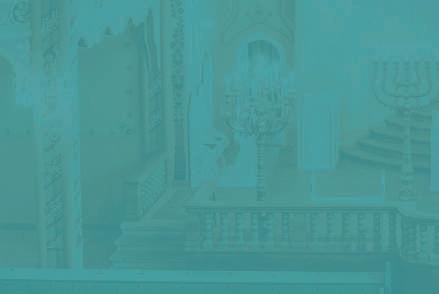











































8 When it means more than anything You need a specialist insurer We've been by your side for half a century and as times and challenges change, we always will be. Our specialists share your passion for your community and provide the tailored products, tools and guidance you need to care for your synagogues and your congregations. Our specialists make us who we are Visit us at ecclesiastical.ca Learn more about programs in Israel at: jewishtoronto.com/israel-engagement BUILDING WEALTH FOR OUR CLIENTS FOR OVER 90 YEARS Robert Bard, President 1100 Rene Levesque Blvd. West, Suite 650 Montreal, Quebec H3B 4N4 T 514 861 5841 TF 811.551.5841 dorchesterwealth.com Personalized Portfolio Management











THECJN.CA 9 www.Steeles.org At Steeles Memorial Chapel, we take pride in providing the Jewish community with a service that is sensitive, caring and helpful in your time of need. Our professional staff takes every detail into careful consideration. For some, it is the relief and peace of mind knowing that their wishes are now recorded and will someday be honoured by their family. For others, it is to unburden loved ones of financial decisions at an emotional time. For information on prearranged funeral services, please call us at Serving the Jewish Community since 1927. 905-881-6003 or visit www.steeles.org OBSESSIVENESS Snoops on you and constantly checks your phone. TWO-FACED RELATIONSHIP Puts on a different face in public. GASLIGHTING Makes you think you’re always to blame for everything. OVERREACTING Reacts in a threatening manner if you suggest breaking up. MARTYR Both a victim and an aggressor. FIVE RELATIONSHIP WARNING SIGNS Content developed by Michal Sela Forum provided to CHW in proud partnership. Half of the women murdered by their partners never experienced physical violence before they were killed. If you need help, call the 24-hour crisis line TOLL-FREE 1-866-863-0511. HELP US BrEak tHE cycLE of vioLEncE vISIt: cHWSoS.ca or Scan tHE Qr coDE SOS 2023 AD (Five Warning Signs) CJN .indd 1 2023-04-17 3:52 PM SPONSOR A PUPPY Sponsor a puppy from just $10/month and you can be an active part of helping them grow from a small bundle of fur into a confident guide or service dog ready to lead someone past the obstacles of daily life. Sign up at israelguidedog.ca/sponsor-a-puppy Or call 416-577-3600
Modi stands up for ‘Moshiach Energy’

10
Photograph by Daniel Seung Lee
Avi Finegold on
Ionce had a college professor say there’s no such thing as a joke that isn’t making fun of someone in some way. I’m not sure that was ever true—but there’s definitely some truth to the fact that humour often seeks to undercut others.
History is lousy with controversial comedians telling jokes that run a 5K across the line of decency. The best ones, however, recognize that their line-crossing serves some kind of greater purpose. George Carlin and Richard Pryor are two of the greats who called out hypocrisy by talking about what they saw around them. And then there’s Sarah Sliverman cutting down the good intentions of a generation with a button-pushing joke, “I was raped by a doctor… which is kind of a mixed feeling for a Jewish girl.”
And so we get to Modi Rosenfeld, a veteran stand-up comedian billed only by his first name, in increasingly brighter lights and bigger rooms thanks to videos he made during the pandemic lockdowns. When he returned to live shows, demand for his stand-up act expanded from Orthodox Jewish events—where some jokes featured a fictional wife named “Stacy”—to feeling free to tell his audiences that he’s actually married to a man.
Modi, to be clear, is not one of the comedy pantheon. He’s not legendary enough—yet. But he has what to say about the community he comes from (a community that uses the phrase “what to say”), which I found to have a serious truth that lies just below a pretty funny surface. We need a comic who’s willing to say that community dinner honourees are just the schmucks who got their friends to donate. It just takes Modi to say it out loud, in a moment of nudging the emperor and letting him know there’s a sale on suits.
I was among the online followers who bought a ticket to Modi’s show at Montreal’s Rialto Theatre in March, which was followed by a couple nights at the Royal Theatre in Toronto. The appeal of this 53-year-old owes much to his backstory: born in Tel Aviv and raised in the Five Towns of Long Island, New York, he went from public school and a psychology degree to a deeper Torah education, which included cantorial studies at Yeshiva University. While working as a banker for Merrill Lynch on Wall Street, he began moonlighting in comedy clubs, without changing the clothes he wore at his day job.
Nowadays, the riffing on topics like how Sephardim love their rabbis while Ashkenazim are blasé about them—if not disdainful—draws big laughs from a crowd that can relate to what he’s talking about. Knowing his audience is how he makes it work, although part of the act is spotting a person in the room who isn’t Jewish, then focusing on them to deliver explanatory asides that help to make the material more accessible for everyone.

The formula isn’t complicated: find Jews who spend all day thinking about being Jewish, deliver observational humour, and get them all howling with laughter.
Laughter is also at the core of what he refers to as “Moshiach Energy.” It’s a term which he’s started promoting at his live shows, on social media, and the weekly podcast And Here’s Modi—on which husband/manager Lou Veiga, who was raised Catholic, shows off his Jewish literacy, unless Modi is teasing him about a mispronunciation.
Buy someone a coffee today? Moshiach Energy. Call your mother? Moshiach Energy. Get a million bucks donated to your shul’s annual dinner? He’ll make fun of you at the gala, but that’s still Moshiach Energy. Live performances by Modi are therefore peak Moshiach Energy, because they unite audiences based on joy. And this positive energy is what will bring the redeemer of the world in a fashion that praying won’t do alone.
Well, if this seems a little facile, that’s because it is. Doing good is easy—and so is laughing at someone else’s expense. But the real work of ushering in a messianic age for the Jews is the beginning of a deeper unity, one that accepts that we are all flawed, and works-in-progress. Reaching that level through stand-up comedy takes real work.
Modi might know what his audience wants. What he doesn’t seem as keen about is trying to figure out what they need. The irony is that there’s not much difference between the two. But the distinction is also what separates the entertainers from the legends. The greatest comics, similar to their court-jester predecessors, knew how to speak truth to power with great wit, and with their heads still attached to their bodies.
Modi Rosenfeld has been speaking some great truths, too. He just needs to realize he’s no George Carlin. At least not yet. n
THECJN.CA 11
how America’s hottest Jewish comic played it just for laughs in Montreal














12 Canada Sportswear Corp. www.canadasportswear.com Proudly CANADIAN OWNED AND MANAGED COMPANY Since 1954 The Gold nger Family wishes you a Happy and Relaxing The Gold nger Family wishes you a Happy and Relaxing The Gold nger Family wishes you a Happy and Relaxing 2023 Kettle-cooked for the perfect flavour and crunch. Available at 1220 SHEPPARD AVE. EAST, SUITE 406 TORONTO, ON M2K 2S5 • TEL: 416-498-7200 HOWARD SONE, CPA, CA RANDY ROVET, CPA, CA MARLA CHASSON SONE, CPA, CA DOUG STOCKWELL, CPA, CA FRANCESCA IASPARRO, CPA, CA MONICA ALIMCHANDANI, CPA, CA DANIEL STERN, CPA, CA BRIAN COOKE, CPA, CA We would like to wish our clients and friends a safe and happy summer! Covid-19 insurance *Pre-existing medical condition insurance with as little as 7 days stability Trip Cancellation/Interruption Visitors to Canada Students Single Trip • Multi-trip (Annuals) *subject to insurers’ Terms and Conditions Alice Kern Financial Security Advisor YOUR TRAVEL INSURANCE SPECIALIST Tel: (514) 332-3776 TOLL FREE: 1-866-270-4996 email: alice.kern@abrfinancialservices ca Please contact The CJN for advertising opportunities info@thecjn.ca
Statistics Canada reports a 47% increase in hate crimes in 2021 over the previous year.

10






TO



THECJN.CA 13
x
BE THE TARGET OF A HATE CRIME
INCREASE
ARE THE RELIGIOUS GROUP MOST TARGETED BY HATE CRIMES. WE NEED TO TALK ABOUT IT OCTOBER 16-17, 2023 | OTTAWA PRESENTED BY CIJA & CANADA’S JEWISH FEDERATIONS ANTISEMITISM FACE FIGHT IT www.fightit.ca REGISTER NOW
at Babyn Yar Turning the Nightmares of i l into a shared Dream of Good A world
Open
Jews are ten times more likely than any other religious minority to report being the target of a hate crime. Koffler Gallery 180 Shaw Street, Toronto
47%
JEWS
The Synagogue
premiere exhibition
until November 12th
NOW OPEN kofflerarts.org
Photo © Iwan Baan
The CJN Daily
A few of the recent news stories reported by
Ellin Bessner
Canada’s plucky contribution
When the producers of Netflix’s Jewish Matchmaking reached out to Jerusalem resident Cindy Seni, she had just come out of a three-yearlong relationship—and she was back to swiping away on dating apps. But the idea of using a matchmaker appealed to her because the producers would propose carefully vetted candidates for the show starring Aleeza Ben Shalom, who claims to have arranged 200 successful marriages.

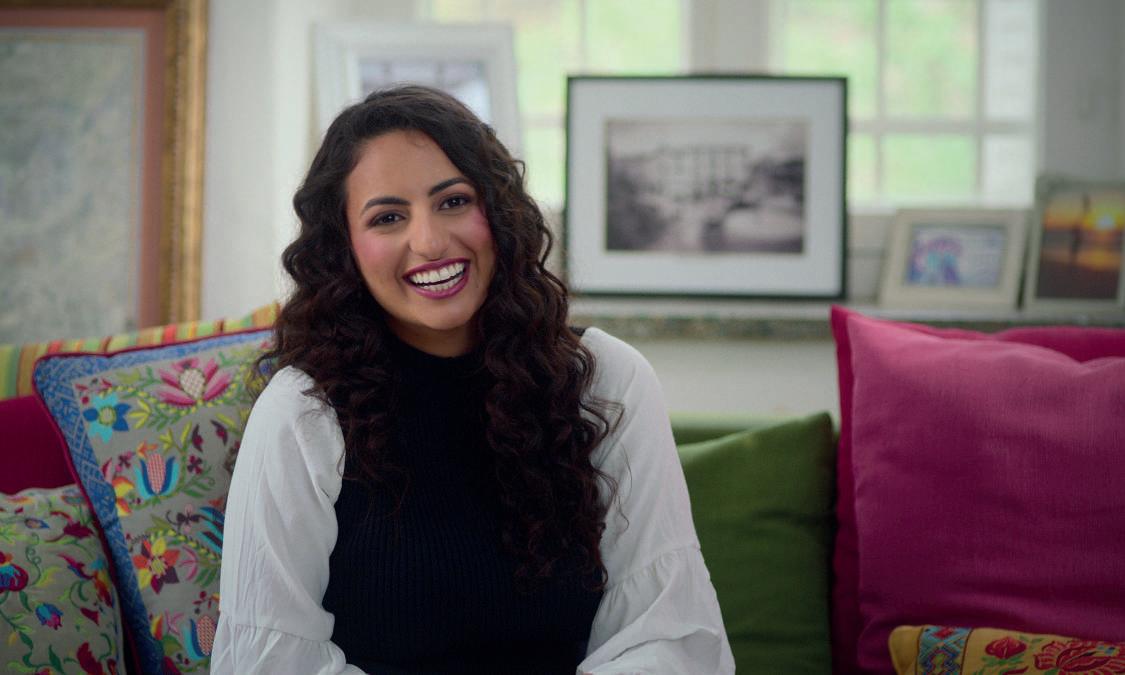
The lingering also played a role in 28-year-old Seni’s on-screen social life last summer, because two of the three men she was supposed to be fixed up with tested positive for COVID. They had to drop out—and she never saw them or even learned their identities. She did go out on two dates with a 34-year-old technology worker: Daniel from Tel Aviv. He took her to an art gallery but didn’t seem to be enjoying himself. But when Daniel showed up late for their second round and didn’t give her enough of an explanation for why, she was “#CindyOut”, as she likes to call breaking it off with men.
Seni’s family has roots in Tunisia, Italy and in France, where she was born and spent her first six years. But by 2000, her parents felt they could no longer live openly as Jews there, and the family of six
moved to Toronto. After a stint working in public diplomacy for the Israel Consulate, she chose to make aliyah in 2018.
At first, her parents weren’t keen on the idea, as she told the matchmaker when they first met.
“My dad told me, ‘If you want to move to Israel, you need either a job, a husband or money.’ I said, ‘Listen, I don’t have any, I’m going anyway.’”
14
Netflix
Rosalie Abella’s big-screen treatment
The first Jewish woman—and first refugee—to be appointed to the Supreme Court of Canada has entered the cinematic spotlight in Without Precedent: The Supreme Life of Rosalie Abella. The film follows some of the seminal social-justice court rulings she participated in from 2004 until her retirement in 2021—from same-sex marriage to workplace rights, from job opportunities for minorities to ensuring the right to strike—while diving into her fiercework ethic and her courage to take unpopular positions on public policy. We also see her private side, including a home and office where every surface is covered in colourful folk art, collectibles and figurines. While she initially didn’t want any role in a film about her life, Rosalie’s husband Irving Abella, who died in 2022, encouraged her to work with director Barry Avrich. U.S. Supreme Court Justice Sonia Sotomayor attended the premiere at the Hot Docs festival in Toronto on May 1, and Abella took a few jabs at the politics of the ruling colleagues south of the border.


Holocaust poems score Juno Award
Two comedy legends come alive again
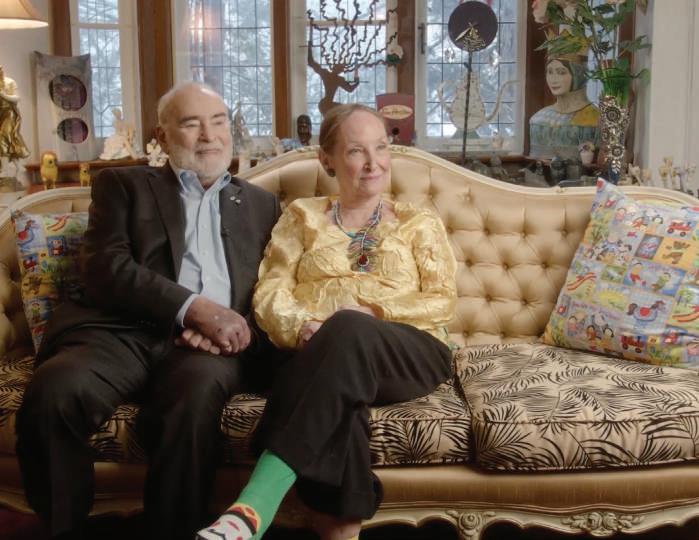

Wayne & Shuster reluctantly moved their comedy act from radio to television in 1954— then they became fixtures of the Canadian Broadcasting Corporation for the next 36 years. Frank Shuster hosted retrospectives after Johnny Wayne died in 1990, until Shuster himself died in 2002. But you can’t officially access their video catalogue today. The lack of permission for the music and background performers has kept that material locked in the CBC vault. Instead, the children of the duo—Michael and Brian Wayne, and Rosie Shuster—have exercised the rights to earlier scripts: Wayne & Shuster Live debuted onstage at the University of Toronto’s Hart House in May, featuring a cast of young local comics. The most famous W&S sketch of all, “Rinse the Blood off My Toga,” inspired by William Shakespeare’s Julius Caesar, was originally on radio.
Lenka Lichtenberg didn’t learn she was Jewish until age nine, around the time she became an actor in Prague. Most of her mother’s Czech family was murdered in the Holocaust, and she took a particular interest in survivor stories after moving to Canada to pursue ethnomusicology studies and continue a performing career. Later, she encountered 65 poems written by her grandmother, who was imprisoned in the Theresienstadt concentration camp. While it was strictly forbidden to write anything down, Anna Hana Friesová managed to preserve the poetry in notebooks discovered by Lichtenberg in her late mother’s apartment. Setting those verses to music led to producing Thieves of Dreams, which won the 2023 Juno for Global Music Album.

THECJN.CA 15 thecjn.ca/daily
Courtesy of The Wayne Family/Bygone Theatre; Melbar Entertainment Group; CARAS
Charles Shahar analyzed data from the 2021 Canadian census for the Centre for Israel and Jewish Affairs and Jewish federations across the country. While the number who reported their religion as Jewish was 335,295, the number who cited Jewish as their ethnicity boosted the conclusion. Shahar shared his observations on the data with Ellin Bessner.
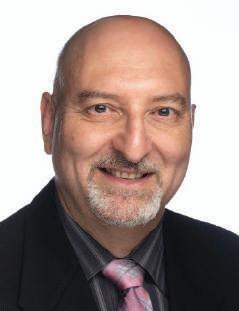
• Canada remains the fourth-largest Jewish centre in the world, after Israel, the United States and France
• Growth in Montreal follows a half-century in decline, while Winnipeg’s population increase reverses a 40-year trend
• Montreal’s increase is credited to immigration from France, along with higher birth rates in the ultra-Orthodox community
• The Jewish Federation of Winnipeg successfully reached out to newcomers from Israel, Turkey and South America
• Newcomers from the former Soviet Union continue to arrive—if not in the numbers of the 1980s and ‘90s
• Toronto has seen its population plateau due to cheaper housing elsewhere, including residents moving to smaller towns
More specific data will follow on interprovincial migration, intermarriage rates, economic status, the number of Holocaust survivors, mortality rates, and how many people in Canada self-identify as Sephardic Jews. The breakdowns help Jewish leaders from coast-to-coast plan their programs and services. Stay tuned for more about these demographic trends on The CJN Daily
Listen to the entire conversation at thecjn.ca/population
16 Calgary 2011: 8,200 2021: 9,300 +13% Victoria 2011: 2,630 2021: 4,385 +67% Vancouver 2011: 25,740 2021: 28,030 +5.1% Winnipeg 2011: 13,260 2021: 13,940 +5.1% Toronto 2011: 186,010 2021: 186,900 +0.5% Montreal 2011: 89,665 2021: 90,255 +1% Halifax 2011: 2,080 2021: 2,735 +31.5% Ottawa 2011: 13,850 2021: 15,000 +8% The CJN Daily
Canada’s Jewish population in 2021 was 404,015 (up 5% from 2011)



























THECJN.CA 17 @summerfreshisfresh summerfresh.com ® VEGETARIAN GLUTEN-FREE NATURAL PREMIUM INGREDIENTS Is it even Summer without SUMMER FRESH? Look for the Green lid in your refrigerated deli section
The girl who got a ‘Golden Buzzer’
Four years after her family moved from Tel Aviv to Richmond Hill, Ont., 15-year-old Maya Gamzu appeared on the third season of Canada’s Got Talent. For her audition, she wore a red string bracelet around her left wrist, which she brought from the Western Wall in Jerusalem. Kardinal Offishall, the rapper on the panel of judges (alongside Howie Mandel, Lilly Singh and Trish Stratus) put the Westmount Collegiate Institute student directly to the semi-finals after a performance of Christina Aguilera’s “Something’s Got a Hold On Me.” Maya, who started performing at age four, learned to sing in English before her family spoke the language. And while Maya didn’t reach the finals—to the dismay of her champion, Kardinal—she subsequently wowed the Toronto crowd at the Consulate General of Israel’s party for Yom ha-Atzmaut.


When rabbis cheer for your team
King David High School in Vancouver won the BC School Sports 1A Boys Basketball Provincial Tournament on March 11 with a 72-68 victory over the defending provincial champions, Unity Christian School. The game capped a successful five-year run for three star players: point guard Jesse Millman, shooting guard Ezra Heayie and centre Joseph Gabay, who wondered if they’d ever shoot hoops together again. But in playing for the province’s only Jewish high school, the King David Lions boasted something its rivals didn’t: rabbinical prayers of support in the stands.

18 The CJN Daily
KDHS Vancouver/Facebook; Rogers Sports & Media
MAZAL TOV TO NETIVOT HATORAH’S GRADUATING CLASS OF 2023!
LIA ALLAL ∙ ELLIYA AMOUYAL∙ NOA BAR-DAVID ∙ ADINA BENARROCH
DARIA JACQUELINE BENAYON ∙ NAOMI SARAH BERLIN MAJLIS
YAEL BERLINER ∙ NAOMI FRIEDMAN ∙ ELLA HASS ∙ ALEGRIA HAVER
ORLI KATCHEN ∙ JAIME KOBROSSI ∙ ATARA MICHAL LAUTERPACHT
NAOMI MALKA MENDELOVITZ ∙ NOA YASMIN NACHIM
KIRA HANNAH NEUFELD ∙ SHELI PALVANOV ∙ MICHAELA SAPIRMAN
RUTHIE SCHACHTER ∙ TEHILLA KINNERET SCHERER ∙ ALISHA SILVER
YAEL SILVER ∙ TOVA MAZAL STOLOVITSKY ∙ REBECCA SUISSA
ELEANA WEINBERGER ∙ LILY WEITZNER
NAVE YEDIDYA BEN SHMUEL ∙ NEHORAI BENSADOUN ∙ NOAH JOSEPH BRODT
SETH CARPINO ∙ SHAMI FISCH ∙ ISSER HILLEL GETE ∙ EZRA GRYN
ZECHARIAH HOROWITZ ∙ MATISYAHU BORUCH HURYNOVICH
AVI KADOCH ∙ JEREMY KANNER ∙ ZEV MICHAEL KARAKOWSKY
YEHUDA KESLASSY ∙ GAVRIEL KONSKER ∙ SETH KRASMAN ∙ ADIR LEVOVSKI NOAM SHLOMO LEVY ∙ ARIEL LIPETZ ∙ AIDEN HARRY MAGDER
BENJAMIN JOSEPH AARON PERLMUTAR ∙ DANIEL ZEV ROMBERG
CHANIEL MORDECHAI ROTMAN ∙ YONATAN CHAIM WEILL

ZACHARY WOZNICA ∙ GAVRIEL MOSHE YUNGER
“And these youths... God gave them knowledge and understanding in every book and wisdom...”
(Daniel 1:17)
On behalf of the Board and staff at Associated Hebrew schools, Mazal Tov to all our Class of ‘23 graduates!

Connor Matthew Adam םדא יבצ םירפא
Ashley Morgan Adam םדא רתסא הריאמ
Benjamin Cole Adam םדא ןימינב השמ
Jonah Ruben Anidjar רגדינא ןבואר הנוי
Avishai Artom םוטרה ישיבא
Aryeh Bahar רכב ןליא והירא
Isaac Star Barazani ינאזרב ראטס קחצי
Lauren Samantha Bell לב הנלא האל
Benjamin Avery Bergel לגרב אבא ןימינב
Jonah Marcus Bergel לגרב יכדרמ הנוי
Eitan Bernstein ןייטשנרב ןתיא
Matthew Aaron Berzin ןיזרב ןורהא השמ
Miya Elle Beyo ואיב רתסא לזמ
Shane Jacob Bitton ןוטיב ןנאש בקעי
Emily Ruth Black קלב לחר
Eytan Alexander Black קלב לואש ןתיא
Orli Miriam Bouganim םינגוב םירמ ילרוא
Aaron Jacob Braunstein בקעי ןורהא ןייטשנורב
Ellie Sarah Brock קורב הרש ילא
Orly Brooker רקורב ילרוא
Rebecca Ashley Carolin ןילורק יגייפ הוח
Abby Lauren Cohen ןהכ היבא
Judah Morris Davidson ןוסדיוד עשוהי
Joshua Daniel Derfel לפרד לאינד עושוהי

Gwen Leona Deutsch שטייד הכרב
Esther Bella Dunec קנוד הלב רתסא
Jared Benjamin Elamleh הילמלא לראב םולש
Emma Sadie Farache שרפ אמיס לחר
Shoshana Farber רברפ הנשוש
Aliza Batsheva Fisher עבש־תב הזילע רשיפ
Rachel Miriam Gabay יאבג לחר
Max Lucas Kohn Geist טסיג השמ
Aaron Gabriel Gertler רלטרג ףסוי
Nathan Solomon Glazer רזילג םולש ןתנ
Isabelle Lilly Goldenberg גרבנדלוג האל הליב
Marlee Ella Goldstein ןייטשדלוג הלא
Samuel Corey Goldstein רוחב המלש ןייטשדלוג
Theodore Bernard Grad דרג ןימינב היבוט
Noa Brielle Green ןירג תור הענ
Asher Jerome Greenwald דלאוונירג ןורי רשא
Samuel Isaac Grossman קחצי לאומש ןמסורג
Noah Gurfinkel לקניפרוג חנ
Noa Claire Heller רלה החמש הענ
Aaron Ryan Herr ררה ׳נור ןורהא
Shira Lily Horowitz ץיברוה הכלמ
Jessica Isakov בוקסיא הרש
Eliana Bracha Kadoch שודק הכרב הנעילא
Mattie Helen Kahn ןהאק הביבח ןיעמ
Eleni Anne Kahn ןהאק ביבא הנעילא
Seth Lazer Kates סטייק רזעילא תש
Jason Daniel Kauffman ןמפוק ןליא
Liat Keren ןרק תאיל
Naomi Hannah Kipper רפיק הנח ימענ
Jillian Hope Kivenko וקנביק הימ הנשוש
Shia Dean Klein ןיילק ןיד היש
Tobias Micah Kohan ןהק הכימ סאיבוט
Yossi Eitan Kopyto וטיפוק ןתיא ףסוי
Daniel Yaakov Kovari יראבוק בקעי לאינד
Eliana Sara Fenichel Kreindler לכינפ הרש הנעילא רלדניירק
Leah Hannah Langburt טרבגנל הנח האל
Celia Eliana Laski הנעילא הדיסח יקסל
Noah Asher Levine ןיול גילז רשא
Cara Eliana Levstein ןייטסוול הנעילא
Samuel Aaron Lichtblau ןורהא לאומש ואלבתכיל
Aaron Leib Litovsky יקסבוטיל ביל ןרהא
Sarah Lyuba Litovsky יקסבוטיל אבול הרש
Harry Mandel לדנמ בוקעי
Jacob Daniel Mandlsohn ןוסלדנמ יש ןתיא
Or Avraham Mari יראמ םהרבא רוא
Harris Jake Meirovitz ץיבוריאמ יבצ בקעי
Emily Sophia Melnick קינלמ היפוס
Ariella Thandi Minsker לחר-הלאירא רקסנימ
Yasmin Leah Mizrahi יהרזימ האל
Rebecca Nerian ןאירנ הקבר
Anne Shayna
Oppenheimer הנייש הנח רמייהנפוא
Jacob Oziel לאיזוע בקעי
Otniel Yehonatan Oziel ןתנוהי לאינתע לאיזוע
Harley Max Pearl לרפ הירא םייח
Nathaniel Benjamin Pearl לרפ לרב בד
Isaac Zev Pogrin ןירגופ באז קחצי
Hannah Aliyah Press סרפ הילע הנח
Jake Samuel Rabinowitz ץיבוניבר לוונייז הנוי
Ari Benyamin Rewega הֲגֶור ןיִמ�יְנִב יִרֲא
Tanya Agam Richulsky יקסלו‘ציר םגא הינת
Samantha Rogowski יקסבוגור הנח
Benjamin Joseph Rosenstein ףסוי ןימינב ןייטשנזור
Daniel David Matan Rotenberg ןתמ דוד לאינד גרבנטור
Ely Meir Dylan Rothman ןמתור ןייד ריאמ יליא
Julian Benjamin Sadikov בוקידס ןימינב
Mia Avigayil Saiet טייס הימ ליגיבא
Ameryn Dara Samson ןוסמס םירמ
Eitan Zalman Sheinbach ךבנייש ןמלז ןוסמס
Elizabeth Madelyn Shapira אריפש עבשילא
Natalie Devora Shlesinger הרובד ילטנ רגניזלש
Jonah Silverman ןמרבליס ןנחוי
Carter Avery Sonshine ןישנוס ןמינב ללה
Aurelia Eve Spiro אריפש לרעפ היח
Paige Sophie Steinberg הרפש הנינפ גרבנייטש
Talya Mira Storger רגרוטס הרימ הילט
Adira Rachel Swartz ץרווש לחר הרידא
Sophie Hannah Tick קית הנח היפוצ
Ethan Joseph Uretsky יקצרוי ףסוי ןתיא
Moriya Uzani ינזוא הירומ
Maya Rose Vidal לדיו תילגרמ הימ
Emily Allison Weinstein הביבא הנעילא ןיטשניו
Eitan Yoel Weintraub בורטניו ןתיא
Roey Meir Weisman ןמסיו ריאמ יאור
Alyssa Rachel Werger רגרוו הרובד הדיא
Rachel Biba Willinger רגניליוו הביב לחר
Dina Wise זיו לדנייש הניד
THECJN.CA 19
...הֶלֵאה
“ המְכׇחְו רֶפֵס־לׇכְב ל ֵכ ְש הְו עדמ םיִהלֱאה םֶהל ןתנ (ז“י ‘א לאינד)
WWW.ASSOCIATEDHEBREWSCHOOLS.COM
םיִדלְי הְו”
!וחילצהו ולע
The Board of Directors, Administration and Staff Congratulate Robbins Hebrew Academy’s 2023 Graduates!

Mazal Tov! !בוט לזמ


Jacob Cooperman
Samuel Danechrad
Lily Diament
Mya Eisenstat
Eva Farovitch
Lyla Frisch
Emma Fruitman
Noah Galet
Mia Hayeems
Hannah Hershfield
Charlotte Kanee
Noal Kazman
Jack Kimmel
Jonathan Kraft
Sophie Lander
Cole Lapedus
Lasry

Charley Lazarus
Sam Levy
Abigail Ptak
Hannah Ptak
Chloe Rapoport
Itamar Ravia
Eden Selchen
Jenna Star Evan Starkman
Mara Stern
Abigail Strasser
Ruby Teplitsky
Tsabar Vaday Austin Warren Jacob Weinstock
Wiener
Neeve Abraham
Mika Agid
Liam Altman
Ella Amir
Massey Applebaum
Max Backstein
Abigail Baker
Emma Baron
Etai Ben-Moshe
Chloe Benchitrit
Jillian Bensky
Milly Bernamoff
Brooklyn Berns
Lily Betsalel
Jacob Biback
Mia Blum
Ryan Braverman
Noah Breido
Max Brodskiy
Aaron Bronizer
Lily Brown
Aubrey Cappel
Jonah Carnevale
Benjamin Carnevale
Addison Cohen
Gracie Cohen
Maya Croitoru
Neta Croitoru
Aidan Daniels
Ethan Diamond
Sadie Dudkiewicz
Samantha Ellison
Jacob Elman
Hannah Elyasian
Logan Epstein
Gabriella Farbman
Joseph Feferman
Ryan Feifer
Cole Feldbloom
Ava Foucault
Joshua Freed
Talia Friedman
Samuel Friedman
Ryan Geller-Benmergui
Leah Ginzburg
Maddy Glick-Cale
Thomas Green
Ryan Grevler
Miya Gurevich
Eva Guterman
Samuel Haidenblit
Amy Hartmann
Sabrina Hausman
Rivka Helberg
Sammy Herczeg
Jack Hershenfield
Evan Holland
Joseph Kaplan
Noah Kats
Aiden Kaufman
Yael Kernerman
Ariel Konopny
Coby Leder
Leora Lefton
Madison Leonoff
Jacob Levin-Gitman
Zach Levy
Jordana Levy
Daisy Lieberman
Dylan Luftspring
Benjamin Mandel
Zach Mandelcorn
Rachael Mann
Reid Mawas
Rafe Meloff
Ryan Merker
Etye Metser-Friedman
Leia Metser-Friedman
Ethan Mocon
James Moskowitz
Mostyn
Samantha Nisan
Ely Nudel
Dylan Orzech
Jacob Perlon
Elle Propst
Joshua Robinson
Ryanne Rolnick
Jack Rose
Isaac Ross
Warren Roth
Ethan Sager
Noah Schneiderman
Mia Schwartz
Alexandra Selby
Daniel Serebryany
Matthew Shore
Jacob Shwarzman
Dylan Siegel
Leo Soer
Victoria Sokoloff
Ethan Steen
Ellis Steinberg
Faith Talsky
Orielle Taylor
Nathan Tenenbaum
Harley Tsherna
Emily Waks
Maya Waxman
Ela Weinreich
Eden Wilson
Katie Wise
Mia Wolfe
Max Wood
Janna Zarek
Meera Zarek
Lexie Zeitz
Gabriella Zisckind
20
בינ הקימ עיל הלא השמ ורהא רת א המא יתיא היאמ הילא ירמ הניב לחר הבהז השמ לעי תיא חנ דוד ורב ורהא הנינפ ורב הנוי ימינב ידע הכרב הימ עטנ דייא יבצ השמ הרש רת א בקעי הנח הקייח לחר וי ייח ייח לאירא
השמ הילט לארשי תנ לייא האל לכימ רמות נער הימ הוא לאומש היח הבוט הקבר הריאמ קחצי השמ וי נור חנ ירא לעי לאירא לואש הרואיל היאמ בקעי ורהא באז הקבר היח חנ נחוי גילז לחר באוי לאפר וי יתיא היל לאכימ לאפר
Benjamin
ורב בל הדוהי הבוט ילא גילז בקעי הנייש עשוהי הנשוש וי קחצי ייח השמ חנ לחר האל לאינד יחימע בקעי בד רפ הגייפ הנח תיא ייח תב הקבר הבהז לאירוא ורהא הריקי הוח היאמ הלא דע תלייא הימ השמ דרי האל הנשוש הלאירבג
WHERE EXTRAORDINA RY TH IN GS HAPPEN. Oliver
בוט לזמ Mazal Tov to the Graduating Class of 2023
לאנתנ הלאירבג לוביל לאיבא הילט הרש רמתיא ןדע הני הללה הרמ היח םירמ רבצ לשרה בקעי לאינד Lexie
Ethan
Burke
ןויצ-בקעי לאומש הכלמ וליש היבצ הלארשי םירמ חנ הכלמ הנח הנשוש היבט באז ןתנוי יפוס יש
האל-הימ
ה”ב
Pulling back the curtain
on the Canadian Jewish arts world

Ever since the inception of The CJN Podcast Network, a multitude of audience members have written in with one specific request: that we start a Jewish arts show. So we listened. This spring, we debuted Culturally Jewish, a new bimonthly podcast covering Jewish artists around the country, pulling the curtain back on brand-new theatre productions, art exhibits, films, TV shows and more. Join hosts Ilana Zackon and David Sklar as they sit down with creators of all backgrounds for honest and immersive insight into the reality of life as a Jewish artist in Canada. Listen and subscribe: thecjn.ca/culture

THECJN.CA 21
Avi Finegold
Stereotypes on strings
Years ago, Joseph Shragge was reading the news and found an article about an antisemitic ice sculpture—a bearded man with a hooked nose and a bag of shekels—at a winter festival in his home province of Quebec. It later came to light that the antisemitic image was, in fact, a popular character from Eastern European tradition, and the non-Jewish sculptors didn’t see what the big deal was.
That inspired Vertip, a new play by Shragge and Alison Darcy, co-art-
istic directors of the Montreal theatre company Scapegoat Carnivale. In their challenging show, a puppeteer who uses these stereotypical puppets is shocked when Zyhd, his money-grubbing Jewish loan shark puppet, comes to life—and starts demanding money.

It’s a different approach to tackling antisemitism, and not one all audiences have been comfortable with. At its core, it asks a fundamental question: how can we preserve cultural heritage without embracing its problematic elements?
Making a living on a prayer
When Lisa Rubin, artistic and executive director of the Segal Centre for Performing Arts in Montreal, caught Prayer for the French Republic in New York City last year, she walked out of the theatre certain of one thing: she had to put this show on. She knew it wouldn’t get a long run on Broadway, overshadowed by Tom Stoppard’s Leopoldstadt next door, and few other theatre companies would pick up a three-hour-long drama with a large cast and heavy Jewish content. But for her and the Segal, it was the perfect fit.
In this podcast episode, hosts Ilana and David take listeners literally behind the scenes during rehearsals for this epic Jewish family drama, speaking with Rubin, her actors, subject-matter experts and audience members who caught a sneak peak.

22
Leslie Schachter; Helena Vallès
The beauty of Babyn Yar
The site of the first mass killing in Nazi-occupied Europe, Babyn Yar has been a dormant field in Ukraine for years. In 2021, a new monument was erected on the ghastly site: a stunning synagogue, colourful and magical, like something out of a fairy tale, literally unfolding like a pop-up book using gears and tracks.
The man behind it is Manuel Herz, a Jewish architect based in

Switzerland who has spent many years researching and contemplating what defines Jewish architecture. His conclusion could be said to be the Babyn Yar Synagogue itself: with no homeland for so many years, rather than develop an architectural style, Jews became known as the “People of the Book”. It’s that literary tradition that inspired the pop-up book style of his incredible monument, which pays tribute to the surviving spirit, optimism and creativity of the Jewish people.
Jokes that bomb
Jeff Rothpan recently worked on Roast Battle Canada, which was nominated for several Canadian Screen Awards. But before that, the Montreal native—who moved to Los Angeles at a young age to pursue his dream of being a comedian and writer—made a career writing jokes for the likes of Steve Martin, John Cleese and Pamela Anderson.
Things really took off once he started working with Jeff Dunham, the comic ventriloquist whose dummy characters include hicks, weirdos, grumps and a dumb dead terrorist named Achmed, who prematurely blew himself up by accident. Rothpan travelled around the world with Dunham and his supporting puppets as he performed in Iceland, South Africa and the Middle East—including Israel and the United Arab Emirates. Subscribe to Culturally Jewish to hear how Achmed (and Rothpan’s jokes) were received in those countries, where suicide bombers aren’t just a throwaway gag.

THECJN.CA 23
Mike Carano: Iwan Baan
TRIBUTE TO ISRAEL
We are grateful to represent a part of Israel’s legacy and look forward to being by your side for another 75+ years, saving lives, delivering lives, and changing lives.




24
Israel Independence Day Parade, Toronto, May 16, 1948.
Photo by Dr. John E. Ackerman.
Ontario Jewish Archives
The Board of Directors and staff of The Canadian Shaare Zedek Hospital Foundation
THECJN.CA 25
The year that shaped me What I learned by spending the mid-1960s in Israel
An essay by Seymour Epstein
 PHOTOGRAPHY BY NAOMI HARRIS
PHOTOGRAPHY BY NAOMI HARRIS
In 1965-’66, at the age of 19, I spent a year studying in Israel, a time that transformed me deeply. What follows is a recollection of how that groundbreaking year shaped my future.
Borrowing from my memoir, From Couscous to Kasha: Reporting From the Field of Jewish Community Work, about my 18 years spent with the American Jewish Joint Distribution Committee:
“I was born one year after the Holocaust ended in Europe and two years before the establishment of the State of Israel, and spent much of my youth mourning and celebrating those two events. I had the sense that the great moments of 20th century Jewish history had passed me by, and that my life would be lived as a passive object of that history, not as one of its writers.
“As a student of Hebrew literature in my early 20s, I was much influenced by Chaim Hazaz’s short story, ‘The Sermon’ (haDrasha), in which the anti-hero, Yudka, bemoans the fact that Jewish history is done to us. In his Zionist fervour, Yudka yearns to be a subject but believes we have become objects of history.”
My chosen career as a Jewish educator was my humble attempt to do Jewish history by teaching a new generation of Jewish youth about their rich heritage of languages, literature, values, and spirituality.
In the mid-1960s, I was a student in the joint program of the Jewish Theological Seminary and Columbia University. The Teachers’ Institute at JTS, as it was then known, was an academic program designed to train Jewish Studies teachers for Jewish educational institutions. As at similar schools in
26

THECJN.CA 27
Epstein at his home in Toronto, April 2023 Photographed exclusively for The Canadian Jewish News
other American cities, undergraduates at JTS were offered the option of a year’s study at Mechon Greenberg in Jerusalem, a teacher training program sponsored by the Jewish Agency and named after Chaim Greenberg (1889-1953), an early Zionist activist and ideologue.
At the time, the Jewish Agency ran three such programs for Diaspora teachers and informal educators: Greenberg, Mechon Gold for religious women, and Machon l’Madrichei Chutz for youth leaders. I had not yet been to Israel, but had attended Zionist schools and camps. The Greenberg program was for me.
Arriving in Israel
With limited financial resources, I funded the trip by working on a tour of Israel and Europe under the leadership of Rabbi Eugene Weiner and his wife, Anita. It was a luxury tour for students that involved two Mediterranean cruises, which meant that I arrived in Israel by boat. I have a very clear memory of my last night on that Zim boat before the morning arrival in the port of Haifa. I thought of my mother, of blessed and wonderful memories, who died a young woman just five years before. She was a First World War orphan from Koretz, Ukraine who always spoke (and sometimes sang) lovingly about Israel. Some of my earliest memories are her conversations with me about the new state. I felt I was making this trip for her, and openly cried on deck thinking about how much she would have wanted to see this place I was about to experience. Some Yiddish song about “What will you do in Palestina?” kept rolling through my head.
That summer of 1965 was a mix of new experiences, Israeli touring, some great cities of Europe, a close bond with Rabbi Weiner and his wife, and a variety of strange, young Jews on the trip. I was in charge of daily prayers and taking special care of a few of the stranger students. At times, my two duties were in perfect sync. The one moment I remember best was linked to the gap between my Diaspora Hebrew (I attended a Jewish elementary school, and most of the courses at JTS were conducted in Hebrew at the time), and modern Israeli Hebrew. I had been hospitalized near Tiberias for minor surgery and developed some heartburn from all the medication. Not knowing the word for heartburn or indigestion, I exclaimed, “bo’er li ha’lev” (“my heart is burning”). That got a rise out of the nurses and a doctor, and it took some tricky gesticulations to calm them down.
It may have been this moment in my Hebrew education that inspired the zeal
with which I pursued my studies that year. Mechon Greenberg was spread over three locations in the Baka and Talpiot neighbourhoods of 1965 Jerusalem. We studied on Rechov Shimshon, we ate on Rechov Reuven, and we slept in Pension Carmi on Rechov Ein Gedi. Our dormitory was the last house on the border of the no-man’s-land that separated it from Jordanian Jerusalem. If your laundry blew across the fence, you didn’t venture out to retrieve it.
The students from North America arrived in September, the middle of the academic year for the South American students who were attending what they spelled Mejon Greenberg. They studied all day at the Machon. We spent half the day there and the other half at the Givat Ram campus of the Hebrew University.
There was some culture shock. The room
trip of the summer. This gave me the mobility to properly tour the small, divided city that Jerusalem was in 1965. It also permitted me the odd road trip to Tel Aviv to visit a couple who had adopted me on that boat from Naples to Haifa. I had no family in the country, and that couple became my link to Israeli life, since most of my time was spent with other transient students.
Studying with Israel’s best minds
Of all the exciting experiences, it was the high quality of teaching by the very best instructors in Jerusalem which made the year for me. My studies at Hebrew University included a Bible course with Nechama Leibowitz. She refused to teach at Mechon Greenberg for religious reasons, but did teach at Mechon Gold, run by the Torani (religious) division of the Jewish Agency, and at Hebrew University, a secular institution. One can imagine how much sense that made to us North American students.
Her approach to text was based on close reading and profound respect for traditional interpretation, along with an emotional attachment to sacred text. It was so different from the highly rational, scientific study at JTS, which I also valued for its intellectual integrity. It was Prof. Leibowitz who taught me that both were possible and that, indeed, the mix of cognitive analysis and emotional identification was a holistic perspective I could best identify with.
I shared with an American student was so small that only one of us could get out of bed at a time. Hot water for showers was available only for a few hours on Friday; a weekly shower before Shabbat was deemed sufficient. In the Jerusalem winter, taking a cold shower every day, as was our custom, was a challenge. Some of us learned to do it less, while others devised complicated rituals involving kerosene heaters.
Eating Jewish Agency food was yet another challenge. The cook was a former dishwasher who replaced the original cook, who we believed died eating her own fare. The food was austere, bland, and in short supply. We North Americans who studied at Hebrew University had vouchers for the student cafeteria, where we made the most of much better cuisine. The South Americans had a trick of their own. The cook would bake a cake for every birthday and it seemed that each Argentine had three or four of them every year. We all learned “Happy Birthday to You” in their Castellano variety of Spanish. I had a Lambretta scooter I’d purchased in Naples and brought over on my last boat
There were some dramatic moments in her class, as when a passage from Exodus had some exceptional contemporary meaning for her and she would reveal her innermost feelings. I remember so well her teaching of the passage in which God tells Moses how He will deliver the Jews from their Egyptian enslavement and bring them to the land of Israel. When she arrived at verse nine —“And Moshe spoke thus to the Israelites, but they did not heed Moshe out of shortness of breath and hard bondage”—she was visibly shaken by the fact that the children of Israel could not listen to the lofty words of God because of their hard work and their shortness of breath. She emphasized that kotzer ruach is not “impatience,” as in modern Hebrew, but literally shortness of breath or even emphysema, the disease of slaves. To this day, I love teaching that text to Israelis so that they can see the brutal origin of a term they use so differently today. Over the years, I have found several new meanings in that text as I teach it again and again.
It was Prof. Leibowitz’s passion for the text itself and her innate pedagogic skills
28
“The cook would bake a cake for every birthday and it seemed that each Argentine had three or four of them every year. We all learned ‘Happy Birthday to You’ in Castellano... ”

THECJN.CA 29
that inspired me in later years to search for ways in which children could connect to the emotional content of the biblical narrative, and not merely with the rational study of text. Years later, while composing that part of my doctoral work I called “Midrashic Drama,” I could still see my professor’s teaching, with all her passion.
She took a special interest in some of her students, invited us to her home, and eventually arranged some private tutoring in Talmud from her neighbour, Yona Ben-Sasson, the father of Menachem Ben-Sasson, a former president of Hebrew University. I think she was convinced that as both JTS and Mechon Greenberg students, we needed more exposure to Talmud. Even though I was a Talmud major at JTS and we had a full course in Talmud at the Machon, she was right.
Prof. Zvi Werblowsky taught comparative religion at Hebrew University and was the dean of the humanities faculty by 1965. He taught a seminar on Jewish mysticism. I was 19 years old and had a total of only three semesters of college behind me, but I craved that advanced course. The other students were older and had some background in the subject. When it was my turn to lead the seminar on an assigned topic, I asked permission to do so in English. Since all the readings were in English and my spoken Hebrew was still elementary, it seemed like a reasonable request. At the next session, Werblowsky asked the class for permission to have “Mr. Epstein speak to us in a language other than our holy tongue”! Despite that remark, I could still appreciate the breadth and depth of his scholarship and was especially grateful for a field trip on Easter eve to Dormition Abbey on Mount Zion to see a traditional Easter Vigil service in Latin. Werblowsky pointed out the chanting of Shirat haYam (Exodus 15:1-19) in Latin as Catholics came out of the mourning of Holy Week to the joy of Easter Sunday. Quite the motzei Shabbat for a young Jew from Toronto.
Pilgrimages to the reading room
Before I recount other inspiring teachers from that year, I must mention a specific room that also had a lasting effect on my abilities as a student. The Jewish Studies reading room at the National Library on the Givat Ram campus was where I became a real learner. I was not a natural reader and did not come from a family of readers. In both high school and my first years at college, I found it quite difficult to concentrate on assigned readings, and I showed little
interest in novels. It was in that reading room, inspired as I was by the content of my courses, the pedagogy of my instructors, the obvious devotion to research I witnessed around me, and the help that I could get from scholars in the next seat where I came to see myself as a student capable of real research. My Talmud teacher from Mechon Greenberg was usually at the back of the room, working on his own doctoral research, but always willing to help. Nechama Leibowitz would enter, smile, and offer assistance. A few times, she recommended articles she hoped would broaden my scholarly perspective. That reading room became sacred to me, and I have visited it since with some degree of reverence. Several years ago, when I requested a meeting with Talmud scholar Dr. David Weiss Halivni, I was pleased to do so in the reading room, at his customary seat. It was like a pilgrimage.
Gabriel Haim Cohen was my Tanach teacher at the Machon. Gabi, as he was known by all, taught us some megillot and the Book of Jonah. He had mastered New Criticism, a literary approach to the Hebrew Bible that had us analyzing the intricacies of biblical diction and grammar. In his Swiss-accented Hebrew, he was a teacher par excellence. I have been using his techniques ever since and recently completed a radical commentary on Esther that was originally inspired by his insights. I came to know Gabi and his wife, Nechama, and, in later years, as country director in Morocco for the American Jewish Joint Distribution Committee, I sent North African students to Mechon Gold, which Gabi then directed. I even brought him to North Africa to lecture to local teachers in a training seminar.
Yehuda Amichai taught poetry at Mechon Greenberg. When I tell people that Israel’s greatest poet of the last years of the 20th century was my poetry teacher, there is some disbelief. But in 1965, Amichai was still struggling to earn a living from writing, so he taught. We surveyed a great deal of early Zionist poetry, the poetry of his contemporaries, and some of his own. We were fortunate

to hear his poems read by their author and we came to appreciate his views on literature, religion, and politics. We also noted his obvious appreciation of beautiful women. He taught us that modernity’s rejection of religion was, at least, a recognition of religion as a force, but that an indifference to religion or an ignorance of its power was not feasible for him: Every night God takes his glittering merchandise out of his showcaseholy chariots, tables of law, fancy beads, crosses and bellsand puts them back into dark boxes inside and pulls down the shutters: “Again, not one prophet has come to buy.”
(From Poems of Jerusalem, translated by Yehuda Amichai and Ted Hughes).
Years later when I stayed at the Inbal Hotel where Amichai swam daily, we renewed our relationship. I invited him to speak to my colleagues at the Joint Distribution Committee but by then, his bitterness about certain aspects of Israeli society was overwhelming. I prefer to remember the young writer and his passion for all that was poetic.
Will I surprise you some more by saying that Aharon Appelfeld was our prose teacher?
30
When I used to encounter him at his favourite café in Jerusalem, I still saw the young Appelfeld, so different from Amichai. His horrendous Holocaust years were etched in his face and on his soul. He was quiet, reserved, and shy. Already married to one of his South American Machon students, he invited us to his modest apartment for tea. He was 35 years old and had survived the Shoah, but he was already writing the masterpieces that made him one of Israel’s most accomplished authors. We had no idea who this shy teacher really was.
Meshulam Tochner, an expert on the author Shmuel (S.Y.) Agnon, among the central figures in modern Hebrew literature, taught us a course on Agnon, who lived around the corner from our dormitory. While we saw the writer at the local grocery store, we never had the nerve to introduce ourselves. We once asked Tochner about Agnon’s story, “The Handkerchief” and misunderstanding us, he quoted every reference to a handkerchief in all of Agnon’s work. It was sad to learn that Tochner died before Agnon won the Nobel Prize for literature in 1966.
Am I Israeli?
While the year of study at Mechon Green-
berg was sponsored by the Jewish Agency, not once during that time were we ever subject to any form of propaganda, nor were we encouraged to make aliyah. What convinced me to link my life to Israel and eventually to make aliyah were two moments during that year.
The first was a walk on Mount Zion, where I saw a Yemenite Jew working in a pit. We began to talk, both of us in halting Hebrew, and he asked me who I was. I explained, in the negative, that I was not Israeli as an excuse for the state of my Hebrew. And he said: “And am I an Israeli?” I realized right then that my passport had little to do with who I really could be.
The second incident was at Yad Vashem on Yom haShoah, 1966. We had been given tickets for the annual memorial ceremony, and in the midst of the proceedings, a contingent of soldiers from different units converged on a floor map of Europe, taking up armed positions on the sites of concentration camps. I was initially offended, thinking that such militarism had no place in such a solemn ceremony. But in looking around me at other faces, some of which were surely those of survivors, I soon realized the significance of an army and a state that was formed too late to save millions of Jews. These two moments, together with the deep study of many forms of Jewish creativity, have linked me forever to both the Jewish people and its state.
Lessons for the next generation
Among the programs that can replicate that state of mind is Birthright, which offers college-age Jews around the world a free 10-day trip to Israel. It’s been a resounding success. Hundreds of thousands of young Jews have taken the trip and studies show that the experience does strengthen Jewish identity. Despite the fact that much of that identity will remain shallow for those participants who have not coupled the experience with some degree of Jewish knowledge, the Birthright team can be proud of their contribution to Diaspora Jewish identity.
The modern fear is that if young Jews
cease to identify as Jews, our numbers will decrease rapidly through assimilation, intermarriage, indifference, and disaffection. These are the fears of those who are mostly concerned with “Jewish Continuity,” a slogan of the United Jewish Appeal of past years.
While identity is necessary, it is clearly not sufficient, and “continuity” speaks lamely of “more of the same.” Creative growth—a blossoming of the Jewish spirit—will not come from the “just Jewish” crowd. Deep literacy, a knowledgeable identification with our literature, history, and values—these are what is critical to the continuation of the creative aspects of Jewish civilization.
The combination of identity and literacy will lead to pride and courage: pride in the past history, values, literature, culture, and enormous achievements of our tiny people; and courage to create a better future for the Jewish people and the wider world by continuing our track record of creative accomplishments.

We have always been innovative in our ability to adapt to new circumstances. Our transition from slavery in Egypt to land-owners in Canaan was the first major adaptation, and it became a primal lesson for future life-critical and transformative shifts—from captivity in Babylon, to centuries of a full cultural and spiritual life in what is now Iraq; from a central faith based on a sacrificial cult in Jerusalem, to a de-centralized local religion flourishing in thousands of communities around the world; from a pre-Enlightenment isolated and insulated religion, to a modern string of secular achievements in all the disciplines and arts of Western civilization; and from a homeless nation suffering from the vilest forms of antisemitism and genocide, to a thriving “Start-up Nation,” the State of Israel.
Because I am convinced that young Diaspora Jews could be attracted to long-term programs in Israel that promote literacy, I decided to write this memoir of the year that changed my life. Thousands of young people are already taking advantage of such programs, but the challenge is both to increase the numbers dramatically and to offer quality experiences which couple a variety of approaches to Jewish identity and to profound Jewish literacy. n
Seymour “Epi” Epstein has been involved in Jewish education for decades in Toronto, Montreal, and Casablanca, Morocco. From 1999 to 2009 he was director of Toronto’s Board of Jewish Education.
THECJN.CA 31
Epstein presnts photos from his time in Israel 1965-66, with his Lambretta scooter
The people of these books
Hannah Srour-Zackon on five recent novels that reflect the current state of Israel
When Hebrew was revived as a modern spoken language, its authors had limited literary inspirations to draw upon. Of course, there was the Tanakh and the piyyutim (liturgical poetry). But for the most part, novelists like S. Y. Agnon and his contemporaries created the modern Hebrew novel, paving the way for the entire canon of Israeli literature.
Israeli literature has since flourished, gifting us with a wealth of wonderful and varied works. Discerning writers have offered their readers meaningful insights, shedding light on how life in Israel has taken shape as the country marks its 75th year.

As a predominantly English- and French-speaking population, Canadian Jews largely encounter Israeli novels in translation. We must therefore thank the passionate translators who take on the responsibility of translating not only words, but also poetics, nuances, and culture. Some of the most innovative work in Jewish literature today is happening in Hebrew; it is only through the methodical work of these artful translators that English and French readers are blessed to enter this world.
The following works, all published in the 21st century, showcase the diversity of Israeli experiences, shedding light on a modern Israel.
Sarit Yishai-Levi, The Woman Beyond the Sea (2023, translated
 by Gilah Kahn-Hoffmann)
by Gilah Kahn-Hoffmann)
Amazon Crossing
The author of The Beauty Queen of Jerusalem recently released her much-anticipated second novel, which takes on the weighty subject of intergenerational trauma and familial rifts. Flipping between the perspectives of its main characters, the novel begins at a moment of intense crisis for its protagonist, Eliya, who has just been abandoned by her narcissistic, aspiring-novelist husband at a café in Paris.
Utterly shattered, Eliya reaches the depths of despair. As part of her path of healing following a suicide attempt, she sets out to repair her strained relationship with her emotionally distant mother Lily—an orphan who was left on the steps of a convent in Jerusalem as a newborn and has no knowledge of her origins other than being Jewish.
Another important component of this story is Eliya’s estrangement from her paternal grandparents. Both are survivors of an old Sephardic Jewish community in Monastir (present-day Bitola in Macedonia) that was largely decimated in the Holocaust. In this forced separation, Eliya is further removed from an important family heritage. Yet as Eliya embarks on her own self-healing, a domino effect of healing takes place, tracing back up the generations.
Set in the mid-1970s, in the wake of the Yom Kippur War, the characters’ suffering and internal struggles mirror those of a country that has been broken in spirit by the war.
Yishai-Levi’s writing is exquisite, and she captures the raw emotions of her characters with stunning clarity in a heart-wrenching novel Keep a box of tissues on hand when reading this book, as it is sure to move even the most stoic reader to tears.
32
Paper Boat Creative/Getty Images
Omer Friedlander, The Man Who Sold Air in the Holy Land (2022) Random House

This effort stands apart from the rest of the books considered here for one particular reason: you can be sure that nothing is lost in translation, since it was written originally in English. Friedlander, an Israeli-Canadian writer, received the Association of Jewish Libraries 2023 Jewish Fiction Award for this remarkable debut collection of short stories.
Across its 11 stories Friedlander brings together stark vignettes from contemporary Israeli society. His characters are colourful and compelling, even when they sometimes have unappealing qualities, and come from all sectors of Israeli society. There is also an air of the fable to his literary style, each story imbued with a kind of dark humour, underscored by humanity.
Particular standouts in the collection include the opening story “Jaffa Oranges,” about an elderly man who made his living selling oranges, but who harbours a shameful secret about his business’ origins; “Checkpoint,” in which a left-wing activist and mother of a soldier who was killed in Gaza in 2014 films soldiers at checkpoints in the West Bank; and “The Sephardi Survivor,” where two boys recruit a stranger to pretend to be their grandfather for Holocaust Memorial Day at school.
Meir Shalev, A Pigeon and a Boy (2009, translated by
 Evan Fallenberg) Schocken
Evan Fallenberg) Schocken
Just weeks before Israel celebrated Yom ha-Atzmaut, we lost one of its greatest writers: a son of 1948 born in the wake of the War of Independence, just weeks after Israel became a country. That his life is bookended by milestone moments in Israel’s first 75 years feels somehow poetic. On a personal note, I have a particular soft spot for Shalev as this book was my entry point into Israeli literature as part of a course taught at McGill by Prof. Yael Halevi-Wise.
Shalev’s most acclaimed novel (it received both the National Jewish Book Award and Israel’s Brenner Award) takes its title from a line in Bialik’s poem At The Gate—an allusion to the book’s central theme of the quest for a home. The novel weaves together an enigmatic love story set in 1948 of a woman and a pigeon-handler, and a story set some 50 years later of Yair, an Israeli tour guide who specializes in bird-watching trips.
The interwoven narratives come together in a dazzling climax at novel’s end. Containing elements of magic realism, Shalev’s beautiful language and intricate storytelling create a thought-provoking and mesmerising read.
A. B. Yehoshua, The Only Daughter (2023, translated by Stuart Schoffman) HarperVia

We lost another giant of Israeli literature in 2022. Yet, it seems, Yehoshua has not finished publishing yet. This year saw the release of his first posthumous novel, a poignant coming-of-age story set in Italy at the turn of the millennium, exploring themes of diasporic Jewish identity and Jewish-gentile relationships. It follows Rachele Luzzato,
the only daughter of a Jewish family with deep roots in Italy, as she prepares for her bat mitzvah while grappling with questions of identity, personal turmoil, and loneliness.
At the outset, Rachele’s father has been diagnosed with a brain tumour, and the precarity of his health looms over her world. Meanwhile, just before Christmas, Rachele is cast as the Madonna in a school play, in which her father forbids her from performing. As the story unfolds, Rachele is caught between clashing factions attempting to guide her understanding of herself.
The novel is beautifully written, and Yehoshua’s prose is vividly evocative. An interesting theme which Yehoshua examines throughout the book is that of “play-acting,” either as a member of another religion or as more religious, to explore the impact of living in a predominantly Christian country on one’s Jewish identity. Yehoshua once (in)famously criticized Judaism outside of Israel as inauthentic, stating that “if you do not live in Israel… your Jewish identity has no meaning at all.” With this in mind, that he sets his novel in a Catholic country acts as a complex thematic undercurrent to the novel.
Yehoshua weaves in several interesting subplots, such as Rachele’s ski trip on Christmas, her fascination with a book her former teacher wants her to read, her relationship with her bat mitzvah teacher Rabbi Azoulay—who has come from Israel to teach in the community—and the pregnancy of her dear pet dog. The Only Daughter is a beautifully layered work of fiction, reminding readers why Yehoshua has figured so importantly in Israeli literature.
David Grossman, More Than I Love My Life

(2021, translated by Jessica Cohen) Knopf
The recipient of the 2018 Israel Prize is among Israel’s most notable current writers. His latest novel is a masterful exploration of the complexity of familial relationships—especially between mothers and daughters—and legacy of trauma.
Grossman’s story centres around Gili, a 39-year-old filmmaker. Having been raised by her father (Rafael) and abandoned by her mother (Nina), at the novel’s beginning, the most meaningful maternal presence in Gili’s life is that of her grandmother Vera, Nina’s mother and Rafael’s stepmother (the family dynamic here is complicated). Vera came to Israel in the 1950s, a survivor of the notorious Yugoslav labour camp at Goli Otok, where she was tortured for some years. At Vera’s 90th birthday, Nina makes a surprising appearance and a shocking revelation. This leads the quartet of Vera, Rafael, Gili, and Nina on a trip to Croatia to visit Goli Otok and to confront the past.
Grossman’s writing style takes on a cinematic quality as the story unfolds, with line breaks acting as scene breaks and transitions as the ‘camera’ shifts between past and present. This narrative tool is a fascinating way of showing Gili’s wariness of getting too close to her own story. She acts as a film documentarian, preferring to remain at a distance to safely observe and protect herself from pain.
This is a deeply moving novel, and a compelling look at the ties which connect us to loved ones, even those who have hurt us in the past. n
THECJN.CA 33
‘We are on the precipice’
Vivian Bercovici takes stock of Israel’s past and its uncertain future

34
I write this in my living room in central Tel Aviv, where I have lived for almost seven years. For two-and-a-half years before that I served as Canada’s Ambassador to Israel. And for 52 years leading up to that tremendous honour, I spent most of my life in Toronto.
I know both sides well; exile and redemption. Seventy-five years of statehood is being celebrated here all day; primarily with disposable charcoal barbecues in parks and homes. In a few hours the air show will thunder overhead, stoking immense pride on beaches all along the Mediterranean coast.
But tomorrow, we will focus again on the reality of 75, which is quite dire. I’ve been taken aback by some of the treacly forecasts published in the last few days. They feel forced; curated to feed an insatiable appetite for a happy narrative in western culture. In recent days, Israel has been hosting tens of thousands of North American Jews participating in 75th celebratory missions. They want “happy.” As does the mega-gathering of Jewish Federations of North America, also in town for this moment. They came to celebrate.
But, based on my private discussions with many of these visitors—some in very senior leadership positions—the Israel they are seeing is not quite what they expected, even if they have been following the news. I know. I was raised on the same Israel as them. The one that works for the Diaspora. And I live in the real Israel today. They are very different countries.

THECJN.CA 35
Independence Day, Tel Aviv, Israel. Apr. 26, 2023.
Demonstrators light flares during a rally in Tel Aviv to protest the Israeli government’s judicial overhaul bill, as the country begins celebrations for its 75th anniversary, on Apr. 25, 2023.
Jack Guez/Getty Images
I recall having just returned to Toronto from a year in Israel as a student and being a guest at a late-summer garden party. 1982. The First Lebanon War raged.
Two months earlier I had been writing final exams for my year at the Hebrew University of Jerusalem. One morning in June, we awoke to a campus with no young men. They had been called up for reserve army duty.
A few days later a simple chalkboard was set on the floor of the main entrance to the campus on Mt. Scopus. Each day, names were erased and new ones written; our peers who had fallen in Lebanon. This became my generation’s war. In Israel, it’s a thing. Every generation has “its war.” But Lebanon was different, because to this day, many see it as a reckless escapade, undertaken by the bullish General Ariel Sharon who had convinced Prime Minister Menachem Begin, against his better judgement, to go in. All the way to Beirut, if need be.
Lebanon is where Israel lost its innocence. There are many Israelis across the political spectrum who see that conflict as a turning point, unlike previous wars, when the young nation initiated a war that was not existential. Begin was gutted by that realization and resigned from public life. There was an enormous human toll—in dead soldiers—as well as national cohesiveness.
I returned to Toronto that summer, and the disconnect was jarring.
At that Toronto garden party, a group of men held forth with great authority on just how amazing and important the Lebanon War was. I offered an alternate opinion. Even in 1982, politics was not a place for young women, and our opinions were not taken seriously. As a society, we were still straddling the mentality of the ‘50s and working on accepting women as intellectual equals—never mind betters.
I was told, by the men, that I really did not understand the situation. My gender aside, in those days, dissent on the matter of Israel simply was not an option. Not in the Canadian Jewish community. We needed Israel to align with our legends and myths, which were increasingly unrelated to the reality.
And now, at 75, both sides, exile and Israel, struggle with what they are, separate and together.
Seventy-five is an extraordinary achievement.
We exist. We have built a beautiful country with a flourishing economy founded on the principles of liberal democracy. David Ben Gurion, on May 14, 1948, managed the
impossible. Only he and Golda Meir—among all the pre-state leadership—insisted that there be no compromise. No UN-preferred half-measures. A sovereign, Jewish state must be declared, they said.
This boldness was spectacular, embodying the new, strong Jew who would take up arms and self-defend. Never again.
Ben Gurion considered that fundamental achievement, after 1,800 years in exile, to be the ultimate goal. “Culture wars,” as he referred to extraneous issues—like disagreements about religion and state—could be sorted out by others. But it is the culture wars that have never properly been addressed by the state and which now give rise to the extreme challenges with which Israel contends and which threaten its future as an economically viable, sovereign, Jewish, liberal democratic state.
As I spoke with visiting North Americans this past week so many asked questions, privately, with disbelief. They live in another reality, where they are focused on addressing assimilation, heightened antisemitism and the concerns of major donors, which are a hugely important driver of North American community life.
In Israel, we are preoccupied with our future as a liberal democracy. And, what is clear to me, after having spoken with so many North American visitors this week, is that they really do not comprehend how grave things are here. I’ve heard a lot of: “Oh, Israel. There’s always some crisis.”
True, we seem to thrive on drama. But this? This is next level.
What’s Really Going On In Israel
The discussion regarding Israel’s current instability tends to focus on the “right-left” political paradigm. But, fact is, it has little to do with these more traditional categories and much more to do with the manner in which the state manifests its Jewish identity. This is a long-deferred conflict over the degree to which matters of religion and state should be separate or intertwined.
Many of the hundreds of thousands of Israelis who have been drawn to the streets to protest the judicial reforms and the impact they will have on liberal democracy are not left-wing anarchists, as Prime Minister Benjamin Netanyahu and his colleagues prefer to brand them. Not by a long shot.

Among this cohort are former Bank of Israel governor and chairman of JPMorgan Chase International, Jacob Frenkel, all former living heads of Mossad, Shin Bet, Israeli Police, Bank of Israel, CEOs of major banks, technology CEOs, etc. The tsunami of support for this “camp—crossing every imaginable divide—is breathtaking. It is also a major slap in the face for Netanyahu.
Opponents of the reforms are heavily secular but include many traditional and some modern Orthodox Jews (in my anecdotal experience from western countries). They see this legislation as undermining, if not obliterating, liberal democracy in Israel. This population tend to serve in the army, work and pay taxes and also do reserve military duty into their 40s and 50s, well beyond the period required by law. They are fierce patriots and say that when they took their oath to .Jack
36 ******
Guez/Getty Images
Demonstrators lift flags and placards during a rally to protest the Israeli government’s judicial overhaul bill in Tel Aviv, March 30, 2023.
THECJN.CA 37
protect the state and its people—to risk their lives—they made that solemn commitment to a democratic country. They refuse to serve an autocracy or illiberal democracy.
This part of the population—much larger than you may think—says that a new contract must be made with the state. They refuse to look away and just accept the blanket exemption from military and national service accorded the ultra-Orthodox haredi population. Not only is it deeply unfair and wrong, it is simply not sustainable, economically or from a standpoint of social cohesion.
Haredim – The Wild Card
At the moment, the haredi parties support the coalition government, but there is nothing right wing about their policies. They support this government only because Netanyahu promised them the world: blanket IDF exemptions to be enshrined in law; a massive increase in kollel stipends for men with families studying full time rather than working; and full state support for haredi-run schools without the requirement that they teach core subjects, like English, mathematics or science.
This ensures that haredi men will continue, for generations to come, to lack any skills that are valued in the workplace.
What this arrangement does, in addition
to entrenching a permanent economic burden on the state, is to ensure that these communities remain poor and dependent in every way on their religious and political leaders. Nowhere in the world do haredi Jews demand such privilege, never mind receive it. This culture of entitlement furthermore flies in the face of the basic tenets of Judaism—that promote a balance between the holy and mundane, material and spiritual. There is no balance in haredi demands for living in the State of Israel.
Religious Zionist Camp
As with all groups, there are factions within, and the Religious Zionist camp is no exception. In recent decades the Religious Zionist population has become more radical, with many adhering to a vision of Greater Israel which includes all territory of Judea and Samaria. Some of the more extreme supporters— including the party leaders Bezalel Smotrich and Itamar Ben Gvir—are messianists who believe it is the Jewish birthright to control territory promised to the Jews by God.
The vast majority of the 350,000 settlers living in the West Bank (not including an additional 150,000 residing in areas over the Green Line surrounding Jerusalem) are Religious Zionist in political orientation. They also serve in the army, value a well-rounded higher
education and are engaged in the economic life of Israel. And they are, overwhelmingly, supporters of the divisive reform legislation.
This sector is committed to certain convictions which it believes to be based in fact: that the court system is biased against religious practice and settlement expansion; that the Supreme Court, in particular, is dominated by left-wing, Ashkenazi judges who are openly hostile to religious Zionism; and that the evisceration of court jurisdiction (as proposed in the reform legislation), while vesting absolute power in the Knesset, will strengthen democracy in Israel.
Absolute Power of The Majority
What has so many Israelis apoplectic is the position of the coalition government that when a majority “wins” they rule with absolute power. Elections and legislative chambers are one critical element of democracy but by no means the beginning and end.

Call them checks and balances or institutional constraints, but mature democracies have an upper chamber—like the Canadian Senate—or an independent judiciary, usually both. With the passage of these reforms Israel will have neither. The Supreme Court’s jurisdiction to review law will be subordinate to the will of the Knesset. All senior government justice advisers as well as judges at every level will become political appointees. Dissent will be a quaint concept of the past.
Many Israelis believe that this is the most profound crisis the country has faced since 1948, because, unlike the early wars, we are not fighting external enemies determined to destroy us, we are battling our inner demons.
One very senior visiting Federation leader asked me, in a private chat: “Are people really thinking of leaving?”
“Absolutely,” I answered, telling him that I personally know of several families with young children who have recently pulled up stakes and moved to Europe. They’ve just had enough. They will not send their children to risk their lives for an illiberal, religiously oriented state.
What I did not ask him was: “Are people thinking of coming to live in Israel?”
Because I know the answer. No. But that is precisely what Israel needs at this moment. A miraculous influx of liberal democratic Jews from the west; secular, traditional, religious. If the country is to continue to flourish economically and remain a liberal democracy, that is.
It’s a matter of time. We are on the precipice. n
38
Canadian Press
Israelis march with the Torah at a rally in support of the government’s plans to overhaul the judicial system, in Tel Aviv, April 22, 2023.























































40 The Board of Directors of Canadian Friends of Herzog Hospital extends its warmest congratulations to The State of Israel on the occasion of its 75th Anniversary. Looking forward to the next 75 years! 47 Sultana Avenue, Toronto, Ontario, M6A 1T2 416-256-4222 • www.herzoghospital.ca
Hospital
Wendy Switzer Myles Chairman of the Board, Canadian Friends of Herzog
Dr. Yehezkel Caine President, Herzog Hospital Only qualified investors in Ontario are able to invest. Foremost’s investment funds are related and connected issuers of Foremost Financial. Potential qualified investors should read the Offering Memorandum carefully before investing. LIC. # 10342 / #11654. * Mortgage Agent
Dr. Jacob Haviv CEO & Director-General, Herzog Hospital For more information on REAL ESTATE AND MORTGAGE INVESTMENTS TAILORED TO YOUR NEEDS VISIT OUR WEBSITE foremost-financial.com CONTACT US Ricky Dogon* EVP - Investor Relations ricky@foremost-financial.com (416) 488-5300 Ext 269
The Foremost Family is proud to celebrate Israel’s Milestone 75th Birthday HAPPY 75TH BIRTHDAY, ISRAEL!
THE ANNE TANENBAUM CENTRE FOR JEWISH STUDIES BUILDS BRIDGES THE UNIVERSITY OF TORONTO AND ISRAELI UNIVERSITIES AND CULTURAL INSTITUTIONS
BETWEEN www.jewishstudies.utoronto.ca Anne Tanenbaum Centre for Jewish Studies
@cjsuo @cjsuo www.facebook.com/cjsuoft
Mazel Tov to the State of Israel On its 75 th Anniversary David Yabrov Jerry Dykopf Elias Benaim Howard Bergman Je Westreich Jay Feingold
Allan Jubenville Jay Benaim Colin Reitsma Justin Abrams Jason Simon Kelvin Lam 3160 Steeles Avenue East, Suite 300, Markham, Ontario L3R 3Y2 Tel 905.475.2222 Fax 905.475.9360 Toll Free 1.888.563.6868 www.kbllp.ca accountants@kbllp.ca



THECJN.CA 41 Established in 1930, Magen David Adom has been serving the people of Israel since the beginning. MDA – Israel’s national emergency medical response, blood services, and humanitarian relief organization. www.cmdai.org
Reena joins the world in celebrating the unwavering courage and resilience of the people of Israel who, through tireless struggle, established a vibrant and diverse country.


From this foundation, Israel has made incredible strides in technology, innovation, and other fields, and continues to inspire people around the world with its achievements.
As Israel marks 75 years of independence, may it continue to thrive with success and growth, and may peace be ever present in the years ahead.

Mazal Tov!
• Cold and Flu
• Skin Conditions

• Weight Management
• Stress Management
• Depression/Anxiety
• Smoking Cessation
• Pediatric Health concerns


• Diabetes
• Neurological Conditions
• Women’s/Men’s Health concerns and more... Naturopathic

42 CONGRATULATIONS TO ISRAEL ON ITS 75TH ANNIVERSARY TORONTO DRIVEAWAY SERVICE (NATIONWIDE) INC.
265
Road,
#1,
416-225-7754
Congratulations Israel www.thor nhillnaturopathic.ca Phone: 905-707-2001 Fax: 905-707-2004 Toll Free 1(855) DrBetty
WWW.TORONTODRIVEAWAY.COM
Rimrock
Unit
Toronto, Ontario
Operating since 1959.
Conditions treated:
• Chronic Pain • Fatigue
• Digestive Conditions
• Allergies
• AD H D
• Environmental Illness
• Cardiovascular Disease
Medicine is covered under most group benefit
BATHURST STREET YONGE STREET BAYVIEW AVEUE STEELES AVENUE WOODBINE A VENUE HWY 407 Hwy 404 12 A CENTRE STREET
Betty Rozendaal BES, MA, R.AC, ND Doctor of Naturopathic Medicine Registered Acupuncturist Thornhill Naturopathic Health Clinic 12 A Centre Street Thornhill, Ontario L4J 1E9 New Patients Welcome Ask for your FREE 15 minute consultation FREE Parking 2145 AVENUE ROAD, TORONTO, ON M5M 4B2 416 441 2888 | HARVEYKALLES.COM חמש גח Happy 75 th
health plans
Dr.
Happy 75th Independence Day, Israel! Reena50.org @ReenaFoundation
The first time we fell in love with Israel
Readers of The CJN share their initial interactions with the Holy Land
To mark Israel’s 75th anniversary we asked readers to tell us their memories of the Jewish state. I was the one reading these emails and it was a joy. The stories start with the historic Partition vote (one of my favourites was from Philip Berger , about his father’s clandestine visit to the United Nations). I received emails about visits to Israel from the ‘60s, before and after the Six-Day War, right up until today ( Michael Brooke ’s story about teaching skateboarding is another memorable one). There were stories about falling in love and stories about visits to cemeteries.
A few readers sent me wonderful pictures and we’ve tried to include some here. There were black-and-white photos of family reunions and photos of teenagers hanging out with friends, celebrating their first taste of independence on a group trip to Israel.
While most of the submissions were nostalgic, a few readers looked at their fond early memories of Israel and asked where had the promise of Israel gone so far astray.
The stories brought back many memories for me as well. Like so many readers, I first visited Israel with my family, where we met extended family for the first time. I spent a formative year at Hebrew University and then later a sabbatical year with two little children, where I learned more than I ever want to know about lice and kindergarten classroom politics.
We didn’t have room to print all of these wonderful stories, but you can read more here, thecjn.ca/israelstories.
- By Lila Sarick
Gary Kapelus, Thornhill, Ont.
In the spring of 1974, I took a year off from University of Toronto to explore the idea of making aliyah. I landed in Israel with no luggage (thank you KLM), and no particular plan other than to visit some distant relatives and to volunteer on a kibbutz in the north. The Hashomer Hatzair office sent me to Kibbutz Shamir, on the Golan Heights.
I met young folks from all over the world, some Jewish, many not. About two weeks after my arrival, on June 13, 1974, the kibbutz suffered a terrorist attack, and among those killed were several kibbutz members working in the bee house and a young New Zealand volunteer.

I had been in the exact location (the pool) and time (around 8:30 a.m.) of the terrorists’ entry into the kibbutz the day before. Had they come that day instead, I would have been the first one killed.
This event marked my introduction to the realities of life on the Israeli border: death and my first funerals, firing flare guns and learning how to assemble an Uzi. As a volunteer, I joined in the nightly patrol around the kibbutz perimeter and spent the following Yom Kippur helping to guard the front entrance to the shul on neighbouring Kibbutz Kfar Blum.
On the other hand, I had the most Canadian of opportunities to dig tunnels and throw snowballs on Mount Hermon. I went on to spend the rest of the year at an ulpan in the neighbouring kibbutz, Amir, where I was the assistant to the beekeeper and loved every minute of it.


 Courtesy of Gary Kapelus
Courtesy of Gary Kapelus
Philip Berger, Toronto.
My father Shimmy was born and raised in Estevan, Saskatchewan. He grew up physically fighting the local antisemites.
In 1947, he was a 28-year-old medical resident in New York City training under the renowned Jewish dermatologist Dr. Marion Sulzberger.
My father was aware of the pending UN General Assembly vote on partition. He did not want to miss the moment. He created a false press pass showing that he was a reporter for the Estevan Times which of course he was not. On Nov. 29, 1947, he was granted entry to the UN General Assembly under cover of his press pass and witnessed the vote in favour of partition. He was ecstatic and joined thousands of others in Times Square after the vote, celebrating and dancing the night away.
Given his experience growing up, he needed no convincing about the need for a Jewish state. He always spoke about the more favourable attitude towards Diaspora Jews in the years following the founding of Israel. Though he was an ardent atheist who was contemptuous of religion, he remained a committed Zionist his entire life. And, he imparted his Zionism to his children, one of whom made aliyah and currently lives in Tel Aviv.

Esther Stone Sarick, Toronto.
Israel at 75 brings back memories of when I was at a student in the after-school Hebrew Institute in Pittsburgh. We were brought down to the auditorium and asked to sit very quietly and listen to the radio. We learned this was a very important and momentous day. I was about 10 years old.
We were told that what we would hear was going to be the most important and memorable day of our lives. It was.
The radio was tuned to a broadcast from the United Nations. Suddenly the announcement was made that the United States of America votes ‘yes’. There was complete silence and then a burst of shouting, hugging, dancing, and crying.
We were dismissed early. I walked home to find my parents being very happy in a way that I had never seen before. Shortly after that, we heard that my mother’s cousin was able to leave Cyprus Displaced Person camp to arrive safely, at last, in Israel.
Halley (Macklin) Girvitz, Calgary. I live in Calgary. We are a small community and were even smaller in 1967, during the Six-Day War.
The community was asked to meet at the Beth Israel Synagogue (now Beth Tzedec Synagogue). My father took my brother and me to the synagogue, where one wealthy gentleman said he would donate $2,000 to Israel. That was a lot of money then. My parents were not able to give that kind of money but my father went to the bank and borrowed some money. I never forgot that.
I am 68 now and have been fortunate to visit Israel, but it was more important for both my sons to visit Israel and love
David Shidlowsky, Kibbutz Gezer.
I started kindergarten at Associated Hebrew Day Schools in Toronto in 1958.
My connection with Israel starts from there. Both my parents had been in Zionist youth groups when they were teenagers and some of their friends came to Israel in 1948 and founded a number of kibbutzim. My father’s father was a member of Hashomer Hatzair in Poland (~1910-1913) before leaving with his family for Canada.
I went to a public high school and maintained membership in a Zionist youth group through high school as well as keeping up Hebrew lessons.
During the Yom Kippur war, in October 1973, one of my classmates who returned to Israel after Grade 9, was killed in the Sinai.
As soon as I heard this, I decided to go to Israel.

It took almost a month to sort out some paper work and I arrived in Israel in November 1973, became a kibbutz volunteer. I have been here since. I have been a kibbutz member since 1975.
Michael Brooke, Thornhill, Ont. My first time in Israel was 1987 and I was 22 years old. It was through this trip I wound up marrying a native-born Israeli in 1989.
44
Simon Saul Berger c. 1950
don’t live in Israel, you can make meaningful things happen there.
I had been publishing a magazine on skateboarding since 1999 ( Concrete Wave ) and in the spring of 2012, I came up with the idea of building a peace movement. I called it Longboarding for Peace and I decided to kick things off with having Israelis and Palestinians skateboard together in the name of peace.
We worked with the Peres Center for Peace and they arranged several workshops, including at the Shuafat refugee camp in East Jerusalem.
There were three members of my family along with about 10 Israelis on a bus. When we approached the security gate, I realized that for most of these folks, they were well out of their comfort zone.
When we got to the school in Shuafat, the students were very excited by all the longboards. We took a number of photos that day—but this one by Yair Hasidof remains my favourite.
It’s all about balance and trust— two critical elements that seem to be in short supply when it comes to Israel and the Palestinian issue.
This photo shows pro skater Yoni Ettinger helping a young student who had never tried skateboarding before. Although she was a little intimidated at first, with Yoni’s help, she found her way.
This encapsulates what is possible if people work together for peace. Skateboarding has always been my way to centre myself. If you go too far to the right, you wind up in a circle. Too far to the left, and the same thing happens.
The only way forward in life (and with the conflict in the Middle East) is a balanced approach—the radical paths of extreme left and right only keep us in circles. This photo reminds me that balance requires support.
Joshua Katchen, Toronto.
My connection with Israel started in Hebrew day school. I went to the Calgary Hebrew School in the late ‘70s and early ‘80s. Israeli shlichim would come for one or two years (some even stayed) and not only teach about Israel, but share their lived experiences —their time on kibbutz, or in the IDF, or on ar-
cheological digs. But mostly, they were happy to set up the reel-to-reel projector and show those JNF films: A kindly old British narrator going all over the country with a folk dancing troupe following him, shots of the walls of Jerusalem, the Tel Aviv coast, the fields of the Golan, the sands of the Negev.
Thanks to those teachers, I knew I had to go to Israel. And thanks to those films, when I got to Israel, I knew I had to try to fry an egg in the desert.
My first trip to Israel was in the summer of 1990 on a Young Judaea program—three weeks on Kibbutz Mevo Hama in the Golan Heights, five weeks touring north to south. The program encompassed everything—Jewish and Israel history, modern and ancient architecture, hikes to waterfalls and swimming holes. Unfortunately, it also included a session on Israel’s struggles with a recorded presentation given by Bibi Netanyahu. (I still have the cassette).

spiraled into the ground near Kfar Yesodot, killing all aboard. He was buried in the Rehovot military cemetery.

Fast forward to October 2017 when I received an unexpected call from Israel.
It turned out that 103 Squadron and Nevatim AFB had undertaken what they deemed a moral obligation to renew the ties with the families of the fallen. They had managed to find me and the daughter of the co-pilot, Fred Stevenson and we were invited to attend Nevatim AFB’s memorial service two days before Yom ha-Zikaron.
Wilf Mandel, Toronto.
Our most meaningful visit to Israel was in April, 2018.
A bit of background: My uncle, William Fisher, was an RCAF navigator during the Second World War. In 1948, Israel was in dire need of aviators, and he volunteered to serve. He was one of over 4,500 volunteers from 58 countries, known as MACHAL the Hebrew acronym for Mitnadvei Chutz La’aretz—volunteers from abroad.
On the night of Oct. 24, 1948, he, along with three other Machalniks, took off from Tel Aviv to bring supplies to Sdom. A few minutes after takeoff, the right engine exploded and the Dakota
The memorial service was held in a large hangar, with over 1,000 people in attendance. We were seated in the front row, and part of the service included a video based on interviews with myself and Stevenson’s daughter. The service was, of course, in Hebrew and the names of the members of Nevatim who had died in service to Israel were read. It ended with the singing of Hatikvah.
On Yom ha-Zikaron, we were taken to the Air Force memorial service at Pilots’ Mountain. Our next stop was at the MACHAL memorial site in Sha’ar Hagai, just off the Tel Aviv to Jerusalem highway, and then, it was on to Rehovot military cemetery to visit my uncle’s grave. It was a moving, once-in-a-lifetime trip. n

THECJN.CA 45
Courtesy of Philp Berger; Michael Brooke; Joshua Katchen; Wilf Mandel
Joshua Katchen with egg
William Fisher’s grave, Rehovot Military Cemetery
Jewish Community Organizations and Synagogues join our brothers and sisters in Israel in celebrating





ISRAEL’S 75TH ANNIVERSARY

Adath Israel Congregation
Beit Rayim Synagogue & School
Beth David B’nai Israel Beth Am
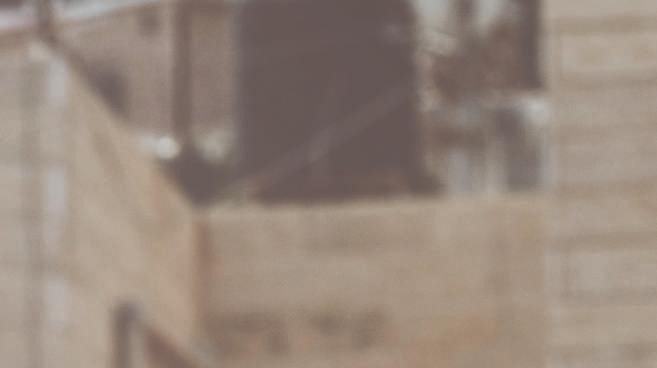
Beth Sholom Synagogue
Beth Tikvah Synagogue
Beth Tzedec Congregation
Canadian Friends of Yad Sarah
CHW (Canadian Hadassah-WIZO)
Congregation Darchei Noam
Congregation Habonim
Hebrew Beach Institute, Synagogue & School
Holy Blossom Temple
Israel Bonds/Canada-Israel Securities, Limited
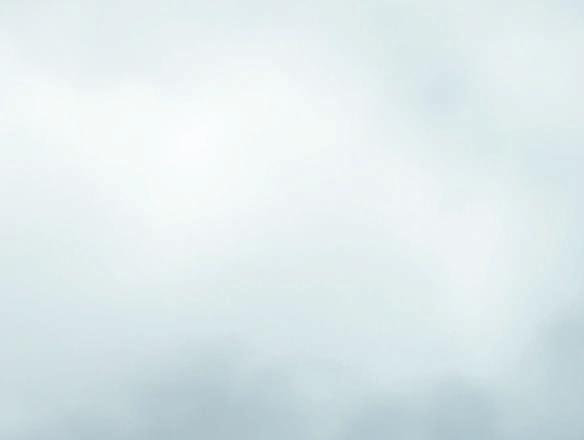
Na’amat Canada Toronto
Temple Kol Ami
Temple Emanu-El
Temple Har Zion
Temple Sinai
The Song Shul











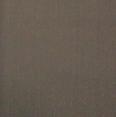



















THECJN.CA 47 Bathurst & Glencairn Thornhill North York Willowdale Richmond Hill Markham Newmarket Scarborough North Richmond Hill Congratulations Isreal on Celebrating 75 Years of Independence! www.realtronhomes.com AT VAUGHAN’S PREMIER JEWISH RETIREMENT COMMUNITY With Anytime Dining featuring Jewish-style cuisine, social activities, excursions, amazing amenities and a vibrant Jewish culture. Book a tour with Wendy: (905) 417-8585 or wendy.teperman@vivalife.ca. 9700 Bathurst Street, Vaughan, Ontario Across from the Schwartz/Reisman Centre (905) 417–8585 | vivalife.ca








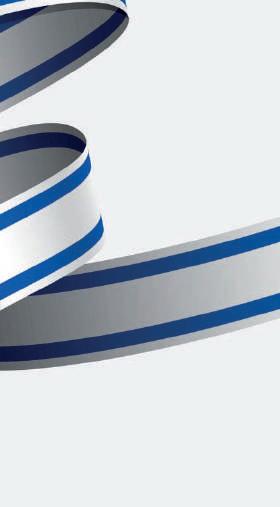




48 CARROCEL.COM 245 Bridgeland Ave Toronto 416 639 2554 @carrocelto LUXURY, ICONIC & CUSTOM FURNITURE Happy 75th Anniversary Israel CANADIAN FRIENDS OF BAR-ILAN UNIVERSITY JOINS THE COMMUNITY IN WISHING ISRAEL HAPPY 75TH BIRTHDAY! www.cfbiu.org 416.781.4466 admin@cfbiu.org Lowell Schrieder Director, Marketing & Communications/Interim CEO Harold Spring Board Chair impacting tomorrow, today First Source Mortgage Corporation (License# 10434) First Source Financial Management Inc. (License# 12594) First Source Mortgage Trust and Limited Partnership ISRAEL HAPPY BIRTHDAY www.firstsourcemortgage.ca






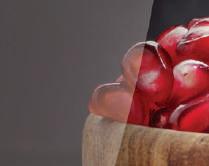
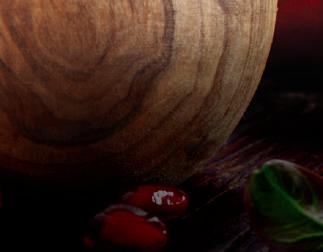






















THECJN.CA 49 Happy 75 Years of Statehood, Israel Four Elms Retirement Residence (905) 738-0905 | 1500 Steeles Ave. W, Thornhill FourElmsRetirement.com Book your tour today (905) 738-0905






50 Since 1951 WISHING ISRAEL ALL THE BEST ON ITS 75TH ANNIVERSARY FINEST NATURAL CANADIAN GRAIN, BAVARIAN BAKING TRADITION. !!FRIDAY SPECIALS!! BUY 2 GET 1 FREE!! Our bread is available at all major grocery stores. 416-763-4315 390 Alliance Ave. (Black Creek & Weston Rd.) Factor y O utlet Hours: Monday to Friday 8:30 am to 4 pm
Congratulations
Explore Jewish history on Ukrainian lands

Ukrainians and Jews have lived as neighbours for a millennium on the territory of modern-day Ukraine, creating and sharing enduring cultures that continue to inform their identities today. Ukrainian Jewish Encounter (UJE) is proud to present Part 1 of an integrated narrative of these two peoples in the belief that there is much to be gained by viewing their historical experience together, in all its complexity.
Visit ujetimeline.org
Ukrainian Jewish Encounter, a Canadian charitable non-profit organization, was founded to deepen understanding of the breadth, complexity, and diversity of Ukrainian-Jewish relations over the centuries, with a view to the future.

ukrainianjewishencounter.org



THECJN.CA 51
75
to Israel at 75 and for its many achievements. Israel’s remarkable resilience is a powerful symbol as Ukraine defends its very existence.
A t S t ee l e s Mem or ial Ch a pe l, w e t ake p rid e i n prov i d i n g t h e J e wis h c o mm un i t y wi th a s er vi c e t hat is se n si t i ve, c a r i ng a n d h e l p f u l i n y o ur t im e of ne e d. O u r p rof essi o n a l s t a f f t ake s eve r y d eta il i nto c a ref ul c o n sid era ti on .



Fo r s o m e, i t is t h e r e li e f a n d p e a c e o f mi nd k n o wi n g t h a t th e i r wis h es ar e n o w r ec o rd e d a n d will s o m ed a y b e h on o ur e d b y t h ei r f a mily . Fo r ot h e r s, i t is t o un b u rd e n lo v ed o ne s o f fi n an c i a l de cisi o ns a t a n e m o ti o nal t im e .


52 www.Steeles.org
For information on prearranged funeral services, please call us at Serving the Jewish Community since 1927. 905-881-6003 or visit www.steeles.org ISRAEL We are proud to celebrate 75 YEARS OF ISRAEL’S people, achievements, and impact. We look forward to what the next 75 years will bring. AM ISRAEL CHAI! יח לארשי םע tor@jnf.ca 416.638.7200 jnftoronto.ca



THECJN.CA 53 The Dunfield Retirement Residence Salutes Israel’s 75th Anniversary. Visit us at thedunfield.com to learn more 77 Dunfield Avenue 416 481 8524
When the Jewish sound of Montreal was Moroccan
Remembering Samy Elmaghribi’s musical influence in a new book by Christopher Silver
When you think of Montreal Jewish culture, your mind may turn to smoked meat and that narrower, sweeter version of North American bagels. If you get more precise and think of Jews, music, and Montreal, your thoughts could drift to Leonard Cohen. But they might just as easily land on Samy Elmaghribi.
Born Salomon Amzallag, he became a musical legend in his native Morocco and beyond. After emigrating to Canada, he wound up the cantor at the Spanish and Portuguese Synagogue, where, among other things, he officiated at my Bonjour Chai co-host Rabbi Avi Finegold’s parents’ wedding.

The Samy Elmaghribi story is a window into several broader ones: about Jews and music, about North African Jews and postcolonial independence movements, and—of particular interest to The CJN’s readers— about Jewish Montreal.
Elmaghribi is one of several captivating figures in Christopher Silver’s book, Recording History: Jews, Muslims, and Music across Twentieth-Century North Africa. Professor Silver is the Segal Family Assistant Professor in Jewish History and Culture at McGill, and was a guest on our podcast episode about Mimouna, the post-Passover celebration originated by Maghrebi Jews.
Recording History is both exciting new research on music itself, and an unexpected history of North African Jews and Jewish-Muslim relations, through the framework
of a shared musical heritage. As the author explained to Avi and me, Elmaghribi “was a Moroccan artist of few equals in the mid 20th century. He was the biggest thing in Morocco in his time, and not only in Morocco, in Algeria and Metropolitan France as well.” This was news to me; Rabbi Finegold, as it turns out, listened to “Samy” tapes on family road trips.
Prof. Silver did not initially set out to go into academia, but a happenstance 2009 encounter with Moroccan Jewish music at a Casablanca record shop piqued his curiosity, and ultimately allowed him to follow a “very untraditional” academic path. He explained, “I have a PhD in history and my primary source material were century old records, shellac records spinning at 78 RPM.”
While the Montreal connection does not fully explain Silver’s presence at McGill—the academic job market also played a role—he told us that he has “quite a few students who come from the Moroccan Jewish community, who end up writing these incredible research papers on their family histories. The materials they’re working with are their family papers: photos, documents, and interviews.” This gives him hope that Montreal might become “a hub,” not just “of Moroccan Jewish history,” which it already is, but “a hub for scholarship on the Moroccan Jewish community.”
In the excerpt of Recording History that follows, Christopher Silver delves into Samy Elmaghribi’s glory days before he got to Montreal. - Phoebe Maltz Bovy
54
Courtesy of Elmaghribi family

THECJN.CA 55
Samy’s Boys.
Revolutionary Music
By the early 1950s, Moroccans had begun to imagine independence. For many, it may have sounded like Elmaghribi. In tandem with a national struggle waged by the Istiqlal political party in global forums like the United Nations, Elmaghribi was sating Moroccans back home with what he called his “sensational revolution in Oriental music.” And it could be heard nearly everywhere: from the concert hall to the radio and from the royal palace to the marketplace. His revolutionary music celebrated urban and rural, north and south, locations in the French protectorate and the Spanish one, while making no distinction between Arab or Berber nor Muslim or Jew. All were Moroccan. But if his nationalism was more capacious than that of the political parties it was no less nationalist. On the country’s largest stages and on its most symbolic ones, Elmaghribi donned the national colors, toured alongside Muslims, and sang of and for the nation. In each setting where his music was performed, Elmaghribi’s audiences learned to perform his inclusive brand of Moroccan nationalism as well.
“The echoes of your brilliant success,” Simon wrote to his brother from Marseilles on Feb. 17, 1950, “have reached me all the way up here.” By early 1950, Elmaghribi’s success was so compelling that Simon encouraged him to remain in Morocco instead of joining him on a permanent basis in Marseilles. In late summer 1950, Elmaghribi, whose music was already broadcast with regularity on Radio Maroc, embarked on his first concert tour of Morocco. “Les Samy’s Boys,” his six-piece orchestra, accompanied him on stops that included Rabat, Fez, and Mazagan.
In the promotional materials for his 1950 tour, Elmaghribi demonstrated the independent style, sartorial confidence, and musical modernism that helped set him apart. The poster for his Sept. 9, 1950, concert in Mazagan, for instance, which adorned kiosks throughout the city, first carried his slogan of a “revolution in Oriental music.” It also included a large photo of a dapper, perfectly coiffed Elmaghribi, bespoke in white suit at the microphone, surrounded by Les Samy’s Boys. With all eyes fixed on their bandleader, his orchestra practically swooned in admiration. “For the first time in Morocco,” the poster announced in French, “Samy Elmaghribi and his dynamic ensemble, ‘Les Samy Boys’ (before their departure for Paris),” were to appear. Catch him for a hometown show, the marketing suggested, before the rest of

the world grabbed hold of him. And with reasonably priced tickets, Moroccan audiences could afford his revolution. That rebellion of “modern music and song” was true to form and included such styles as “Franco-Arab, flamenco, Egyptian, Algerian, Tunisian, [and] Moroccan.”
As his advertisements promised, Elmaghribi’s early set lists included music that ranged across North Africa and the Middle East, across styles, and across languages. Emblematic were his breakout record “Luna lunera,” a bolero written by the Cuban composer Tony Fergo, which Elmaghribi translated into Arabic while maintaining whole verses in Spanish. But it was one disc
in particular that ingratiated Elmaghribi to a wide swath of the Moroccan public: “Lukan al-milayin” (If I had millions). Perhaps it was its aspirational quality that endeared the singer and the song so.
In “Lukan al-milayin,” Elmaghribi dared dream the impossible so long as French rule persisted in Morocco. In the song, Elmaghribi articulated the lengths he would go to pursue the love of his life.
Ay ay ay, if only I had millions
I know what I would do with them at that time.
On boats—in planes
I would cross oceans and traverse the skies To search for my love in every place.
56
Pathé promotional photo of Samy Elmaghribi, ca. 1951.
“Then came the congratulations of all the Muslim personalities, which touched me”.
Courtesy of Elmaghribi family
But if Moroccan audiences gravitated toward “Lukan al-milayin,” they would have also relished its folly. Traveling by boat and plane in order to reach “the East and Lebanon, India and Yemen” (fil-sharq wa-lubnan, fil-hind wa-l-yaman), as Elmaghribi crooned, would have been recognized as pure fantasy when considering that the majority of Moroccans needed permission to travel abroad. And yet, the realm of possibility that was part and parcel of the appeal of a song like “Lukan al-milayin” would also have suddenly seemed within grasp as the national struggle gained ground. Elmaghribi’s music was providing Moroccans with a taste of their possible future.
By 1951, Elmaghribi was increasingly in demand within an ever-widening circle of Moroccan fans, among them the political establishment, the well-heeled, and the working class. While his earliest concerts had already attracted a multiconfessional Moroccan audience, he actively cultivated Jewish-Muslim diversity in the years to come. Initially, he did so in a number of ways, including through the promotion of his shows with Arabic-language concert posters and by featuring highly regarded Muslim artists on the bill like Lahbib Kadmiri and Bouchaïb El Bidaoui. Thanks to a combination of factors—his look, his voice, his choice of song, his charisma, and the shows that he assembled—Elmaghribi could report the following to Simon:

My success in Morocco is certainly immense and I am recognized and surrounded very quickly no matter which city I’m in, in Casa, [cities] small and big, everyone points out Samy with their finger, with a smile [ . . . ] the great success of the day remains the Song of
the Millions (my creation) in Arabic of which you have the record and which is hummed by Arabs and Jews, young and old, men and women, in all the cities of Morocco.

He could hardly move in Morocco without drawing attention or being swarmed by fans. The veneration of Elmaghribi by Moroccans even caused some Jews who had left the country to second-guess their decision, at least momentarily. “Moroccan Jews arriving in France are speaking about your success with pride and admiration,” Simon informed his brother on Aug. 14, 1951. “I would have paid dearly to find myself in Morocco these days,” he continued, “to be intoxicated by your rise to success; I miss this Morocco.”
In 1952, Elmaghribi started explicitly flying the colors of Moroccan nationalism—or at least wearing them. “I have ordered from a fine tailor six splendid outfits for the six best performers in Morocco, who will accompany me on my tour,” he wrote to his brother on Feb. 22, 1952. “These wool outfits are in the Moroccan colors: red vests with satin-lined lapels and green pants,” he added with pride. In the midst of composing, recording, performing, and preparing for yet another concert tour in April and May 1952, Elmaghribi had been contacted by the sultan. “These [outfits] were designed,” he noted, “for our presentation to His Majesty the Sultan and then the Glaoui [Thami El Glaoui, the pasha of Marrakesh], which is going to give me a good helping hand in my climb to success.” The red-and-green outfits seem to have done just the trick.
Over the next year, the relationship between Elmaghribi and the sultan, the central symbol of Moroccan anticolonialism and its
attendant liberation movement, strengthened considerably. By the end of summer 1952, Elmaghribi had given his first of many private concerts for the royal family. He provided his brother Simon with sumptuous play-by-play. “Last Sunday, Prince Moulay Hassan, son of the Sultan, sent for me and I sang until the break of dawn,” he wrote on Aug. 22, 1952. This was no audition. Crown Prince Hassan was more than familiar with Elmaghribi and his music. “My hits were requested by His Highness himself,” he noted. After having brought him to his Casablanca villa, the crown prince promised the artist an invitation to the most iconic venue of all.
On Nov. 17, 1952, just before midnight, Elmaghribi took the microphone at Dar al-Makhzan, the royal palace and offcial residency of the sultan in Rabat. For the occasion of Throne Day (ʿid al-arsh), a holiday invented by nationalists in 1933, the sultan himself had requested the presence of the Jewish artist. In the early hours of Nov. 18, 1952, Elmaghribi sang two patriotic compositions of his own creation as well as other songs “before some 2,000 Muslims and before Moulay el Hassan, who presided over the soirée where the best musical and theatrical troops of Morocco had passed through.” If his relationship to the monarchy could once be considered private, his association with the royal family was now public. Again he communicated his triumph to his brother in Marseilles. “My success has exceeded the limits of my wildest dreams,” Elmaghribi proclaimed. “The ovation given to me by the public was nothing like the simple applause received by other artists,” he boasted. “Then came the congratulations of all the Muslim personalities, which touched me,” he added. Elmaghribi’s “sensational revolution in Oriental music” was now firmly aligned with the royal family. n
THECJN.CA 57
Casablanca 1950s.
Christopher Silver’s book, Recording History, was published by Stanford University Press in 2022.
Life in the Heart of the City




58 Happy75th Anniversary Israel
Located in the heart of the city on Avenue Road, just north of Bloor Street, Hazelton Place, is a quiet, tranquil oasis in the midst of a bustling and vibrant community. With fine dining, life-enrichment programming, a robust community feel and seemingly endless services and amenities, you'll love your new lifestyle. Call to book your personal tour (416) 928-0111 111 Avenue Road, Toronto Visit us at VerveSeniorliving.com Ha p p y 7 5 t h A n n i v e r s a r y Is r a e l Toby Feldberg and Family Congratulations Israel on your 75th Anniversary!
VANCOUVER ◊ EDMONTON ◊ CALGARY
TORONTO ◊ MONTREAL ◊ HALIFAX
WASHINGTON ◊ NEBRASKA ◊ KANSAS
ILLINOIS ◊ MICHIGAN ◊ PENNSYLVANIA
5025, Ramsay, St. Hubert, Quebec J3Y 2S3
Tel: (450) 455-0050 ◊ Fax: (450) 445-4828



















www.pipe-piling.com

THECJN.CA 59 Minden Gross llp BARRISTERS & SOLICITORS 145 King St. W., Suite 2200 Toronto, ON M5H 4G2 416.362.3711 @MindenGross www.mindengross.com Celebrate Israel’s 75th Anniversary CELEBRATING 75 YEARS OF ISRAEL’S INDEPENDENCE FOUNDATION PRODUCTS
PILING
BRANCHES
PIPE PILING BEARING PILES SHEET
WF & H BEAMS
William Kurelek’s ‘Jewish Life in Canada’

60
Jewish Wedding, Calgary, 1975
Sarah Milroy, chief curator of the McMichael Canadian Art Collection in Kleinburg, Ont., on the painter’s myriad contributions
With his series of paintings, Jewish Life in Canada, William Kurelek created one of his most intriguing and paradoxical works. Intriguing because it was painted as a gesture of cross-cultural diplomacy between himself—a devout Roman Catholic convert of Ukrainian immigrant heritage—and his Jewish art dealer, Avrom Isaacs. How could someone of such extreme religious conviction, which blinkered him in so many areas, achieve such an empathetic leap?
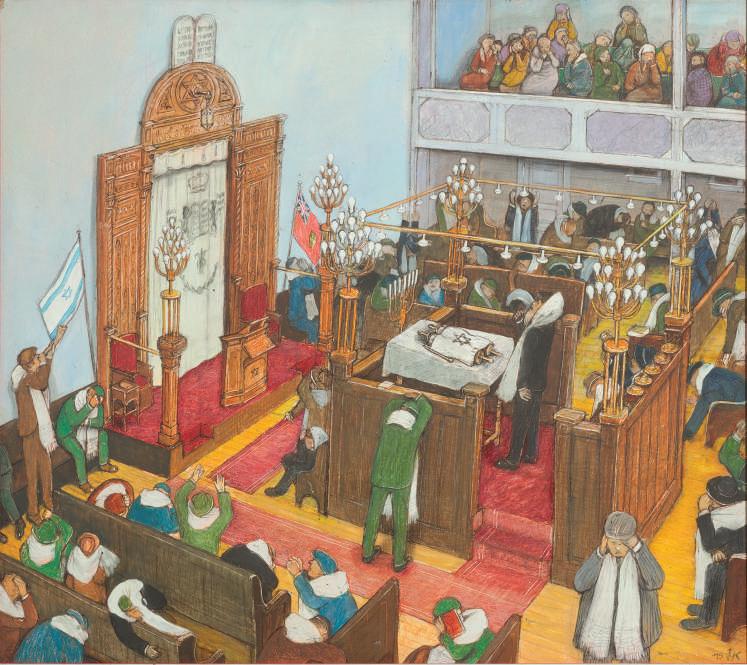
An extremely influential figure on the Toronto cultural scene, Isaacs was born in Winnipeg and moved with his family to Toronto in 1941. He later studied political science and economics at the University of Toronto. Opening his Yonge Street gallery in 1961, he plucked Kurelek from obscurity, discovering his talent by accident while Kurelek was working as his picture framer. (Kurelek had earlier apprenticed as a framer in London, England, following his art training in Toronto.) Ten successful exhibitions ensued at the Isaacs Gallery, as the artist worked through his themes with increasingly manic energy, developing a loyal following in the market. He even caught the eye of the estimable American art historian Alfred H. Barr Jr., founding director of the Museum of Modern Art in New York City, who acquired Kurelek’s Hailstorm in Alberta, 1961, while on a trip to Toronto. This series was, in a sense, payback.
The series is paradoxical, too, because it seems to articulate two visions of the immigrant experience at once: on the one hand, a sunny story of rejoicing brides, contented dairy farmers, cheerful children at their violin practice; and on the other hand, a darker story of abandoned farms, harassed street merchants, and forlorn new immigrants huddled on train platforms far from their homelands. Was Kurelek celebrating the success of Jewish settlers in Canada or grieving their struggle to belong?
Given his own rough start and his later success, it was likely a bit of both. Kurelek knew immigrant struggle as a first-generation Canadian. Growing up in rural Alberta and then Manitoba, he was often subjected in the schoolyard to random acts of cruelty at the hands of his peers, experiences that inspired later works such as Farm Children’s Games in Western Canada, 1952, and King of the Castle, 1958–59. Always the outsider’s outsider, Kurelek was mocked for his differences, his language, and his family’s
poverty. He suffered as well at the hands of his father, who belittled his sensitivity, no doubt contributing to his son’s lifelong mental illness.
Kurelek was also haunted by the stories of the old country that he heard from his parents, images that rear up in works such as Cross Section of Vinnitsia in the Ukraine, 1939, 1968, an early work in which the stacked bodies of corpses can be seen rotting below ground while festivities reign above. (The bifurcated scene is set behind bars.) Another work, Zaporozhian Cossacks, 1952, describes a violent rout of Ukrainians at the hands of Russian soldiers. The terrors of Europe were so close that he could almost touch them. No doubt it was these experiences that underpinned his sensitivity to immigrant stories. Over the course of his career, Kurelek made many suites of works on immigrant themes, attending also to other groups of Canadians often overlooked in the largely British dominant culture of the day: Polish immigrants, Irish immigrants, Ukrainian pioneer women of the Prairies, lumberjacks, and the rural people of Charlevoix, Quebec.
Jewish Life in Canada, though, has a distinctive back story, one rooted in shame and atonement. As Kurelek’s friend and collaborator on the project, Abe Arnold, reported in an article in the Winnipeg Free Press in 1976, a year after the completion of the Jewish Life in Canada series and a year before Kurelek’s death, the artist’s family had initially supported Germany’s efforts in the war, so aggrieved had they been by the prejudice and harassment they had faced from those of British heritage in their community. “We learned to our dismay,” Kurelek said, “what a bad mistake we’d made in the placing of our sympathies.” In fact, the earliest work by the artist that we can find record of is a series of pencil drawings that he made as a teenager, now held in Library and Archives Canada, Ottawa, copying the harrowing photographs of Hitler’s concentration camps—images he was encountering in the popular press. With a jittery hand he traced the brutalized and emaciated bodies, and the menace of their captors, annotating the drawings with descriptions of the atrocities committed. One drawing in this series is a self-portrait, likely the artist’s first, catching
THECJN.CA 61
Yom Kippur, 1975
himself in a moment of self-encounter. What kind of man would he be?
Completed during Kurelek’s stay at Lourdes, France, in 1975 (one of his several pilgrimages to Christian sites), Jewish Life in Canada was thus a long-gestating act of personal atonement, and one to which he brought special attention and care. “I wanted to do my bit in undoing some of the injustices Jews have suffered at the hands of Christians,” he told Arnold, adding that it constituted “some of the most intensive painting I have ever done… because of the
extraordinary amount of detail in these, compared to my usual things.”
This series can be understood, though, not just as a tribute to Isaacs and his community but to Canada itself, a Canada that had—in the end— served Kurelek well. Exhibitions of his art were proliferating from coast to coast, eleven books on his art had been published, and he had much to be thankful for. But it was, as well, a moment of buoyant optimism across the country. In the glowing aftermath of Expo 67, where Kurelek’s art had been displayed in the Ukrainian Pavilion, the late


sixties and seventies saw the blossoming of multiculturalism as a Canadian ideal—one that extolled the Canadian mosaic versus the American melting pot. Every different newcomer culture was to be honoured and preserved for its distinct attributes and histories, a policy ultimately enshrined in Pierre Trudeau’s Canadian Multiculturalism Act of 1971. Writing in his essay “The Development of Ethnic Consciousness in a Canadian Painter,” Kurelek asserts that “my experience has helped me to appreciate how fortunate I and other people of various
origins are to be living in Canada,” adding the caveat, “Although we cannot always share our heritage, we can at least express it in freedom.” He continues: “There is no longer any excuse for anyone in this country to be ashamed of his cultural background. Canada has a multicultural society. The days of Anglo-Saxon domination are gone or nearly gone.”
As Patricia Morley relates in her essential biography of Kurelek, when his Ukrainian
62
Left: Jewish Baker’s Sabbath, Edmonton, 1975
Above: A Zionist Society in Montreal Honouring its University Grads, 1975
Pioneer series was unveiled in Parliament six years after his death, Mary Kurelek, the artist’s mother, was seated beside Prime Minister Pierre Trudeau, in a moment of solidarity. If the Group of Seven had been brilliant at promoting their ideal of Canada as a land of “wilderness” and manly adventure, Kurelek upheld a dream of tolerance, inclusivity, and opportunity that remains more unrealized than most Canadians care to admit. Notably, the implementation of the Multiculturalism Act has been critiqued for doing little to uphold the Indigenous cultures of Canada, focusing instead on the celebration of newcomers—an omission that Kurelek’s art seems to tease at in his works depicting Inuit life in the Canadian Arctic. Saccharine, anachronistic images permeate his book The Last of the Arctic, made to order as a commission for Christopher Ondaatje’s Pagurion Press, but the artist’s own take on life in the North in his series of 30 paintings called A Point of View: Cape Dorset N.W.T., 1968, is more nuanced and sensitive to contemporary realities. In these works, Kurelek includes telephone poles, trucks, skidoos, and the abandoned oil drums that littered the landscape—and even the local airport on a blistering bright winter day. These are not images of an Indigenous culture frozen in time but of living and evolving communities. I see a rare prescience here, with Kurelek
identifying a blind spot in Trudeau’s vision of glittering cultural tesserae. The Winnipeg Art Gallery owns a work by Kurelek that is particularly striking in this regard, a tiny but powerful depiction of a prairie highway in a blizzard. At the side of the road, a tiny figure stands with his thumb outstretched, hoping for a ride. The title of the work today is Gotta Get Home, 1974, previously titled Indian Hitchhiking from Saskatchewan. Who among settler artists was thinking about Indigenous displacement and poverty in 1974? While Kurelek’s religious faith led him to hold some bizarre and extreme positions on issues of the day such as abortion, sexual freedom and the perils of consumerism, his underlying message was one of empathy and understanding.
The work of multiculturalism is ongoing in our country. At the McMichael, we are delighted to have acquired Jewish Life in Canada, a series that contributes to this work. The series has already established itself as a favourite with our visitors. Standing in front of these paintings, people stop and talk. They find themselves in the scenes, identifying the places and the human experiences Kurelek sets before them: the woman beside a railway platform in Saskatchewan with her immigration papers held to her chest, an impossibly detailed brick wall under demolition in Toronto, the Winnipeg tailor with
his measuring tape, the little boy in Montreal practising his violin before dinner, the lighting of candles for a family Shabbat in Edmonton. Visitors linger over these details and the eccentric frames that distinguish them, created by the artist himself, each one skilfully attuned to the image. They respond as well to the warmth of Kurelek’s imagination, his scenes of family life, of labour, of the rituals that bind, and his dream of a nation where all can belong. n
Jewish Life in Canada William Kurelek


THECJN.CA 63
William Kurelek’s series Jewish Life in Canada is paradoxical because it seems to articulate two visions of the immigrant experience at once: a sunny story of rejoicing brides, contented dairy farmers, and cheerful children at their violin practice; and a darker story of abandoned farms, harassed street merchants, and forlorn new immigrants huddled on train platforms far from their homelands. Was Kurelek celebrating the success of Jewish settlers in Canada or grieving their struggle to belong?
Jewish Life in Canada: w i LL iam Kure L e K McMichael Goose Lane Milroy
—Sarah Milroy
William Kurelek, Jewish Life in Canada, published by Goose Lane Editions with McMichael Canadian Art Collection in 2023
Jewish Separate School in Winnipeg, 1975
SRULIK THE YOUNG SABRA
During a wave of terror attacks in Israel in the fall of 2000, David Matlow was among just 14 Torontonians who went on a United Jewish Appeal mission. He wanted to support stores on Ben Yehuda Street in Jerusalem, where tourist traffic had fallen silent.
And that’s when he spent $5 on this significant figurine.
Srulik was created by Kariel Gardosh (known by his pen name Dosh) in 1951 as a cartoon representative of the country. The pioneering sabra sported a kova tembel (pioneer’s hat) along with khaki shorts and sandals. Israel’s youthful answer to America’s aging Uncle Sam captured a plucky optimism.

“It was a reminder that the difficult period would pass,” says Matlow of this addition to his personal museum of Zionist memorabilia. “Srulik serves the same role for me in 2023. We need to be optimistic and believe in a better future. And, like him, we need to roll up our sleeves to make that so.”
When Dosh created Srulik, boys named ‘Yisrael’ often had that as a nickname. The character ultimately appeared on stamps honouring Israel’s 50th birthday. The cartoonist was still actively drawing when he died at age 79, in early 2000. Months later, Srulik took his place in Matlow’s collection, which now numbers over 6,000 items and counting—as featured in the Treasure Trove at The Canadian Jewish News. Am Yisrael Chai!
Download a free copy of David Matlow’s ebook 75 Treasures at herzlcollection.com
66
Photograph Kevin Viner Elevator/Toronto
















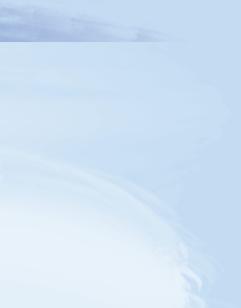



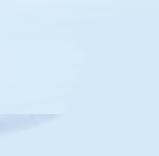







































































































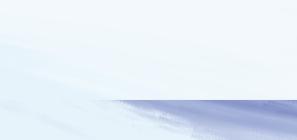





































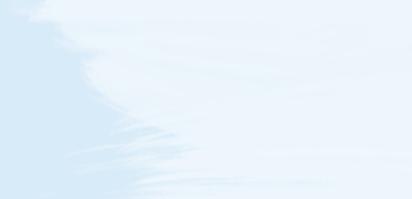


















We are proud to launch a new summer course together with the The Martin (Szusz) Department of Land of Israel Studies and Archeology at Bar-Ilan University. @AIISConcordia @AzrieliInstitute 514-848-2424 ext. 8721 azrieli.institute@concordia.ca concordia.ca/azrieli T24-85201 Learn more about our Summer in Israel Program 2023 :
The Azrieli Institue of Israel Studies wishes Israel HAPPY 75 th INDEPENDENCE DAY! Happy Anniversary www.robapp.com 75th
PHOTO: BY LISA KOMLOS
YOUR TURN to continue the story

68
For the first time in its 63-year history, The Canadian Jewish News can accept charitable donations, as one of the Canada Revenue Agency’s registered journalism organizations. Y o u can d o n at e at t h ecjn.c a /d o nate 1960-1971
The Canadian Jewish News
1971-2014 2014-2020




















































































































































 PHOTOGRAPHY BY NAOMI HARRIS
PHOTOGRAPHY BY NAOMI HARRIS





 by Gilah Kahn-Hoffmann)
by Gilah Kahn-Hoffmann)

 Evan Fallenberg) Schocken
Evan Fallenberg) Schocken








































































 Courtesy of Gary Kapelus
Courtesy of Gary Kapelus






































































































































































































































































